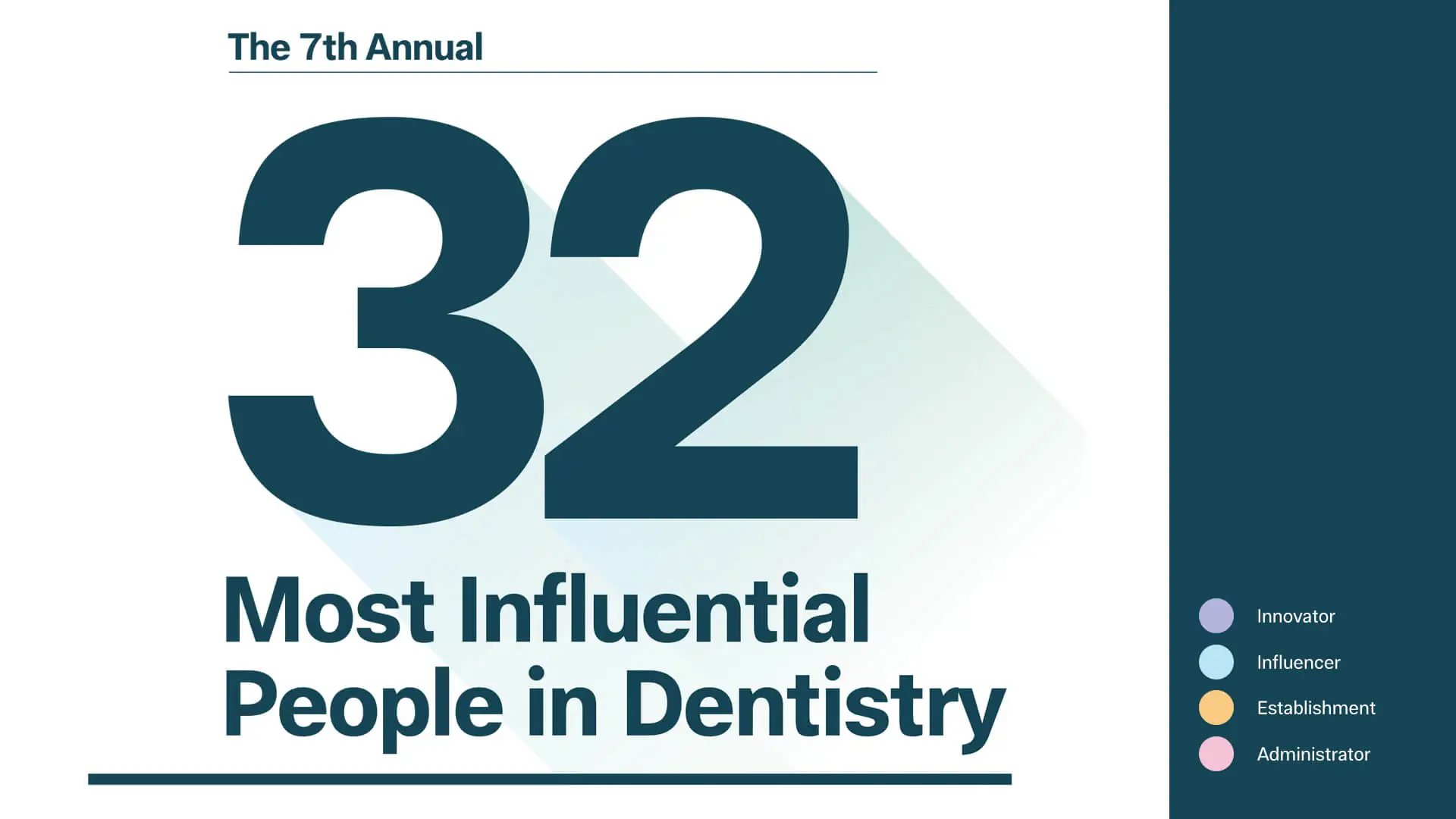
By Elizabeth Dilts, McKenzie Kupchik, and Jerilyn Forsythe
FOR SEVEN YEARS, Incisal Edge has, in this annual feature, attempted to quantify that most vaporous concept: influence. What is it? Who wields it most successfully? And is there any way truly to measure it?
Those questions, to us, are all part of the fun of the exercise. There’s the kind of influence you can build via social media. There’s the amount of money or market share you control. There’s influence in being a thought leader, an educator, a lobbyist, a government official.
The pages ahead are, as the saying goes, a snapshot of a moving river. The 32 entries on this list (one for each adult tooth, of course) are, we feel, industry leaders for one reason or another as of the summer of 2023. There are plenty who have made the list more than once, as well as some key newcomers whose contributions bear watching in the 12 months ahead.
Difficult choices were inevitable. Whom did we leave off, to your chagrin or irritation? You can influence us by getting in touch and letting us know your thoughts. For now, open wide and get started—an entire universe of dental industry influence awaits.
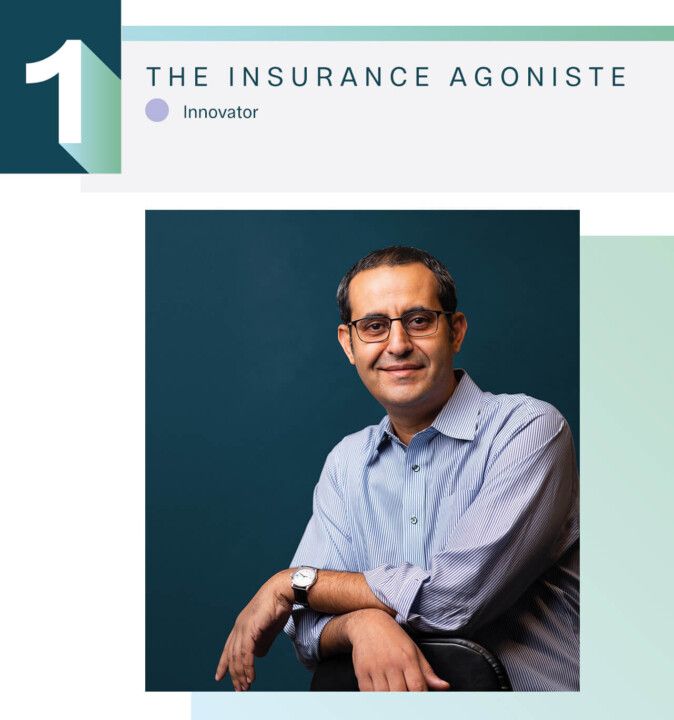
Dr. Mouhab Rizkallah
Orthodontist, Activist, Successful Gadfly
Somerville, Massachusetts
New
WHILE MOST orthodontists focus on reshaping their patients’ mouths, Dr. Mouhab Rizkallah has been working to reshape the dental industry itself. His push for a dramatic change in how dental-coverage companies pay out benefits—via his successful 2022 Massachusetts ballot initiative, Question 2—is just the latest in a string of battles this orthodontist has fought to improve care for patients.
Not only has Dr. Rizkallah initiated Question 2 and filed numerous lawsuits against MassHealth, which oversees the Bay State’s Medicaid and Children’s Health Insurance Program (CHIP)—he also helped pay for these efforts, including the more than $3 million he reports to have spent on the ballot initiative (see “Profits, Politics . . . Patients“). “I’m heavily invested in real estate and whatnot,” Dr. Rizkallah, 48, says. “This is not financially oriented. I’m life purpose-oriented, and I use money as artillery. That’s really what it is. I’m trying to do things that are meaningful to me.”
Now based in Somerville, Massachusetts, just across the river from Boston, Dr. Rizkallah grew up in what he describes as the “hardworking blue-collar town” of Port Jervis, New York. He married his high school sweetheart. “She and I have been together for 33 years,” he says. “She was my pastor’s kid.”
After earning separate undergraduate degrees in biology and business management at the State University of New York at Buffalo and a dental degree at SUNY Stony Brook, on Long Island, Dr. Rizkallah did his residency in the Boston area and never left. He opened his first orthodontic practice in Somerville’s Davis Square, eventually expanding to five additional locations.
“You come out of dental school, you go to an orthodontic program and then you start to see all of these problems in dentistry,” he says. “You’re saying, ‘Well, where is the solution? Who is going to come to fix this?’ We delegate to our organizations, but nothing’s happening. It’s ineffective.”
What he observed was that there was far more talk about a better, more transparent and reliable system for insurance payments than actual advocacy among most dentists. “There came a point where someone’s got to do something, so that’s how it came about for me,” he says.
Dr. Andrew Chase, past president of the Massachusetts Association of Orthodontists and current chair of its Public & Professional Relations Committee, says he often has collaborated with Dr. Rizkallah to ensure that patients, particularly underprivileged ones, could receive high-quality care and decent benefits. “Mo and I have fought side by side against MassHealth for years,” Dr. Chase says, noting that Dr. Rizkallah would often be the “bad cop,” pursuing litigation while Dr. Chase’s good cop was “trying to create levers [to effect meaningful change]” through his organization.
“He is talented in law, he is financially capable and he is dedicated to his patients in a way that I don’t know any provider is,” Dr. Chase says of his compatriot. “Nobody can accuse him of trying to get rich in orthodontics when such a significant percentage of his practice is underprivileged. The changes he’s forced have allowed several thousand kids to get care.”
The American Dental Association gave Dr. Rizkallah and members of his Question 2 campaign committee a presidential citation for their work on the referendum. “He’s courageous and willing to take risks and push forward,” says Chad Olson, the American Dental Association’s director of state government affairs. “I think dentists are very aware of what he did.”
Dr. Mark Vitale, an Edison, New Jersey-based dentist who chairs the Garden State’s Dental Political Action Committee, credits Dr. Rizkallah with making the public aware of the dental benefits system’s manifold problems. “He’s someone who saw an issue, was fed up with dealing with it, he was fortunate to have enough financial backing and he was able to make a public issue that we were all able to jump onto and help out with,” Dr. Vitale says. “It created a great conversation nationally for dentists to have with their patients.”
Dr. Abe Abdul, the Cambridge-based president-elect of the Massachusetts Dental Society (see No. 13), calls Dr. Rizkallah “a hero” as well as “a true friend of his profession. Why shouldn’t patients benefit more from the dollars they put into their insurance? Isn’t that what insurance is for?”
Naturally, Dr. Rizkallah’s passion (and success) have engendered stiff opposition. Mike Adelberg, executive director of the National Association of Dental Plans (NADP), a dental-benefits trade organization, spent considerable time on the opposite side of the Question 2 battle with him. “He’s a very passionate individual,” Adelberg tells Incisal Edge, declining to comment further.
Dr. Rizkallah and his wife, Laura, have four children—two girls, two boys, ages 8 to 19—raising them in Boston with “Boy Scout virtues,” he says. The family leads what he calls “a simple existence”—one car for him and Laura, no boats or anything fancy. “Neither of us needs much,” he says, “but we try to do meaningful things.”
Having proven that you can, after a fashion, fight City Hall and win, we suspect this newly influential orthodontist is far from done. —Mark Caro
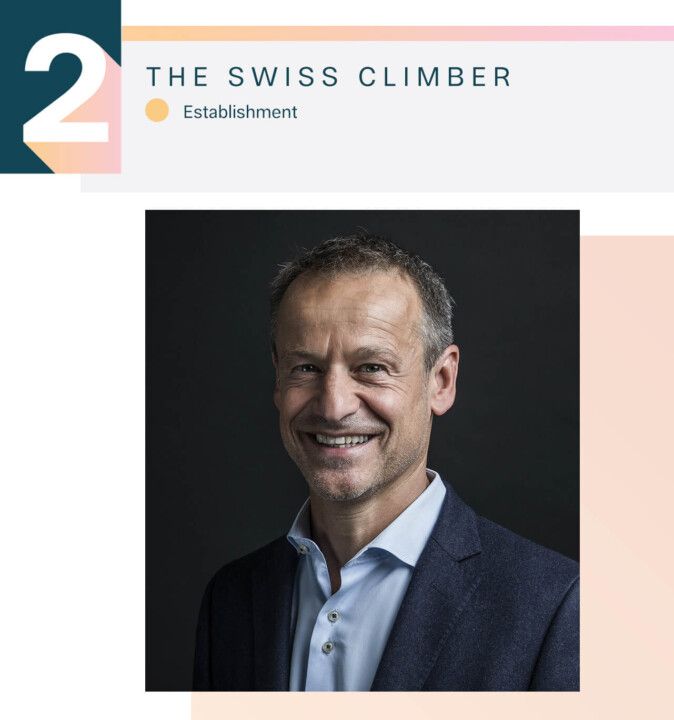
Guillaume Daniellot
CEO, Straumann
Basel, Switzerland
Last year: 2
IN FEWER THAN three years at the helm of Straumann, Daniellot has quietly overseen one of the most remarkable expansions of a dental company during the pandemic era. Appointed CEO in January 2020, he has presided over a nearly 15 percent jump in company revenue, to $2.5 billion in 2022, including an almost 16 percent boost in organic revenue and a 21 percent core profit margin. Its market capitalization was clipped by 5 percent last year, but that still outperformed the S&P 500, which was off 14 percent in the same period.
“Macroeconomic uncertainties and geopolitical tensions might have an impact on the dental industry. However, we have seen that patient flow remained stable during the previous months of challenges,” Daniellot says. “In addition, with an estimated globally addressable market of [about $21.1 billion], we remain confident that we will continue to gain market share and progress in all our strategic priorities.”
Market share growth, check: Straumann in 2022 built on its customer base and expanded geographically. The worldwide implant market is estimated at some $6 billion, and Daniellot’s company increased its share of it—the largest of its five core business segments—to 30 percent. Straumann estimates that it, Envista, Dentsply Sirona, Osstem and Henry Schein control about 80 percent of implants, but in precision implants, where the Swiss firm saw solid pickup of its premium Straumann BLX and TLS products, it estimates its market share to be close to half.
One potential big growth area: CAD/CAM equipment, for which Straumann controls just 5 percent. “Patients [are] becoming increasingly demanding health consumers, who expect faster and more personalized oral care solutions,” the company noted in its annual report. “We are therefore continuing to invest in our digital solutions portfolio to ensure even more efficient and engaging treatment solutions for clinicians and our health consumers.”
To work toward that goal, Straumann last year acquired a 36 percent stake in CareStack, a cloud-based practice management software provider, and increased its ownership of Amsterdam-based dental AI developer Promaton to 70 percent.
Another growing contingent of Straumann’s customer base is dental service organizations. “In 2022, our DSO business made significant progress by adding more than 120 DSOs, comprising more than 1,400 practices globally,” the company notes. “In 2015, only around 7 percent of implants were placed by dentists affiliated with DSOs. That figure was about 15 percent in 2021 and is expected to rise to 30 percent by 2025 in major markets.” In other words, for Daniellot, having skillfully guided his charges through an unprecedented several years, the ascent is only beginning.
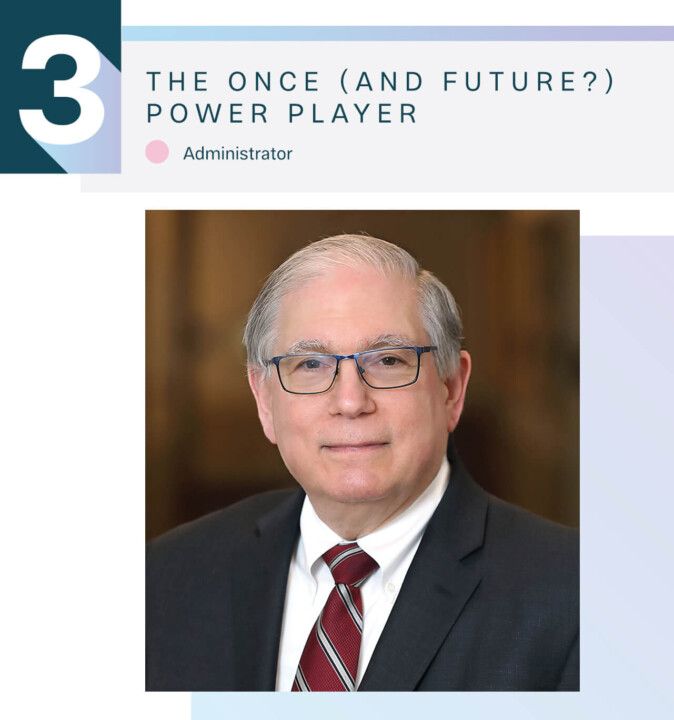
Lawrence Tabak
Acting Director, National Institutes of Health
Washington, D.C.
New
AH, DR. TABAK, we hardly knew ye. You became the highest-ranking dentist in the federal government in 2021 after being tapped for the acting directorship of the National Institutes of Health following the departure of Dr. Francis S. Collins (see our Summer 2022 issue). As of this writing, you’re essentially a lame duck pending Senate confirmation hearings for your permanent replacement, Biden nominee and National Cancer Institute director Dr. Monica Bertagnolli.
Why, then, are we keeping you on this list? First, as we said, you rose higher than any dentist ever at the federal level; plus, overseeing any $50 billion agency, even temporarily, is no small task. Second—and this is a very long shot—maybe you’re not going anywhere quite yet. Maybe. Hear us out.
Usually, Senate confirmation hearings for posts like NIH director are formalities. But we live in interesting political times, and Dr. Bertagnolli potentially faces a harsh grilling by skeptical Republicans. It’s not necessarily just the GOP standing in her way, either. Senator Bernie Sanders, independent of Vermont, has signaled opposition if she doesn’t commit strongly enough to prioritizing price reductions for prescription drugs. While we wouldn’t bet long money on a failed confirmation for Bertagnolli, we also wouldn’t rule out delays.
Further, Dr. Tabak, you appear to be a supporter of Dr. Bertagnolli’s, calling her “ideally suited” for the job when she became the first female director of the NCI. Did your influence play a role in her ascent? We’ll probably never know for sure; the NIH declined our request for an interview.
What we do know is that you may have played a key role in changing the dynamics of how the NIH operates, since Dr. Bertagnolli is widely viewed as a trailblazer unlikely to accept the status quo. Therefore, however others view your brief tenure there, you raised the ceiling for dentists in powerful positions and perhaps even had a hand in ushering a new and more vital future for the NIH. That, we think, is the definition of enduring, and certainly noteworthy, influence.
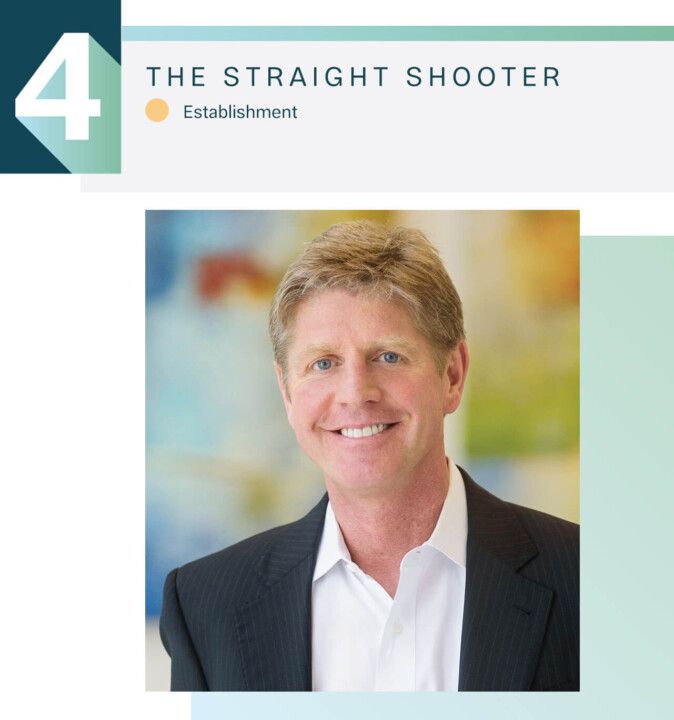
Joseph Hogan
CEO, President and Director, Align Technology
San Jose, California
Last year: 1
AFTER TWO consecutive years in the pole position of the 32 Most Influential, Align’s boss has been knocked down a peg—but only just. After more than 25 years and 15 million patients, Hogan’s company (whose market cap sits around $22.3 billion) and its ubiquitous Invisalign system have transcended their status as disruptors and become, gasp, something of an industry institution as its competitors—cough, Smile Direct Club—languish in penny-stock steerage.
As such, we’re listing him here as a member of the establishment, no longer (merely) an innovator. Yet innovation remains Align’s coin of the realm. “We’re focused on digital dentistry, scaling capacity to manage millions of digital treatment requests, patient scans and orders flowing through our systems—while also using technologies like AI and machine learning to speed treatment planning and deliver products so patients can begin transforming their smiles,” Hogan says.
One goal: to help doctors improve practice productivity. This is the inspiration behind recent improvements to the Align Digital Platform, a suite of tech and services to cover patient workflow from end to end. It also introduced ClinCheck Live Update for 3D Controls, which enables doctors to make Invisalign treatment modifications quickly, reducing the required time from days to minutes, and added a CBCT integration feature to ClinCheck. “It combines roots, bone and crowns into a single 3D model, enabling doctors to visualize a patient’s roots,” Hogan says, and thereby treat a broader array of cases.
“Our goal is to give patients of all ages access to the smiles they want and deserve,” the CEO says. “It is essential that trained doctors are directly involved in assessment, treatment planning and ongoing monitoring of the patient. We strive to connect them with new patients and providing digital solutions to increase efficiency.” All in a day’s influential work for this upstart who has become a standard-bearer.
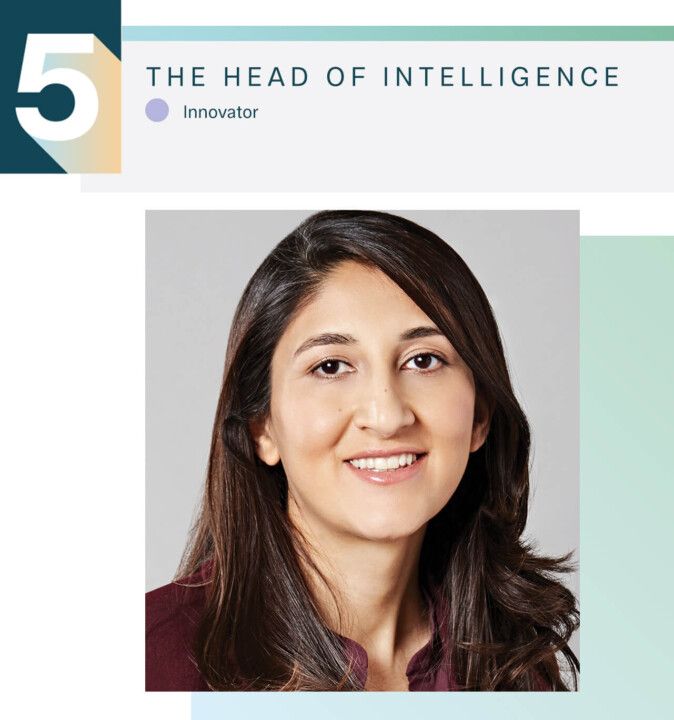
Wardah Inam
Founder and CEO, Overjet
Cambridge, Massachusetts
Last year: 8
OPENAI’S CHATGPT language processing tool set the world aflame upon its release last November, instantly boosting AI’s disruption of how industries of all kinds do business.
“AI is taking everything by storm now,” says Overjet’s Inam, who was on the cover of Incisal Edge’s Year in Innovation issue last year. “It’s still early, but I think 2023 is the year that more established organizations will also start leveraging AI to enhance operations.”
Inam founded Overjet in 2018 as a postdoctoral fellow at MIT’s Computer Science and Artificial Intelligence Lab. Now, with the green light from the feds—the company has four FDA clearances as of press time—and more funding than any other dental AI company (nearly $80 million), it’s positioned to become the default AI program for dental insurance companies. It’s the only one, for example, with FDA-cleared technology that performs both bone-level measurement for detection of periodontal disease and caries. Overjet, integrated into hundreds of private practices and 65 DSOs, has already analyzed some 58 million patient radiographs.
DSOs offer particular promise. “For Overjet, 2022 was the year we had serious adoption in the space,” Inam says. “[DSOs] saw significant value in streamlining operations and performing the right treatments.” The tech doesn’t just promise improved patient care and smoother clinical operations; it will also draw more attractive recruits—STEM-minded graduates, say—to practices. Dental schools are clamoring: The University of Florida College of Dentistry announced late last year it was partnering with Overjet to launch a program that will include access to its proprietary AI Teaching Clinic.
For providers, AI’s consistency and efficiency foster faster claim processing and payouts. The AI reviews incoming claims for more than 350 procedure codes and reduces the time it takes to review a claim by around 80 percent.
Though Overjet is uniquely poised to change how insurance companies and practitioners do business, its greatest accomplishment might be chairside. “In addition to helping doctors with their clinical decisions, AI is a powerful patient education tool,” Inam says. “When patients can see where they have cavities and bone loss, they better understand the need for the treatment their doctor is recommending.”
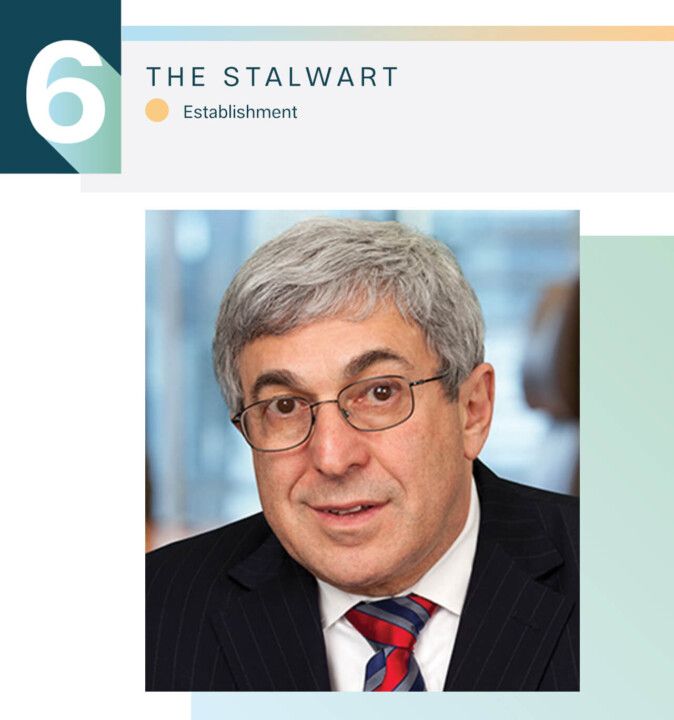
Stanley Bergman
CEO, Henry Schein
Melville, New York
Last year: 7
BERGMAN HAS BEEN near the top of (almost) every iteration of this list thanks to his long tenure leading the world’s largest distributor of health care solutions and dental and medical supplies. Now 72, Bergman joined Long Island–based Henry Schein in 1980 and became CEO in 1989.
He has helped build a reliable profit engine that last year generated $12.6 billion in net sales (up 2% from 2021), including global dental sales of nearly $7.5 billion (off 1% from the year prior on slowing sales of protective gear for Covid-19 and the adverse effects of foreign exchange rates). So far this year, Schein has seen strong demand for merchandise, particularly for the basics—chairs, units, lights and more.
While such demand indicates that dentists may be pulling back on expensive items, Schein execs say it also shows clinicians are busier than they were before the pandemic, and expanding their practices—good signs for the industry despite macroeconomic uncertainty.
This spring, Schein inked two major deals: In April, it closed on a majority ownership stake in France’s leading implant business, Biotech Dental, and in May, it announced it was acquiring Brazil’s top implant company, S.I.N. Implant System—evidence of its apparent bet that the large unmet implant need worldwide presents a significant opportunity. At an investor presentation in February, Schein executives also outlined their growing focus on selling specialty goods to the endodontic and orthodontic industries, along with Henry Schein One software.
The perennial question: How long will Bergman be at the helm? Steven Paladino, Schein’s longtime chief financial officer, retired last April after 35 years with the company. Ronald South, who had served as the chief accounting officer since 2013, succeeded Paladino as CFO. While Schein’s board no doubt has a succession plan ready, it has not disclosed any potential Bergman moves. (Henry Schein did not respond to requests for comment for this list.) It hasn’t been all smooth sailing, but surely Schein shareholders, at least, wouldn’t mind seeing him stick around a little while yet.
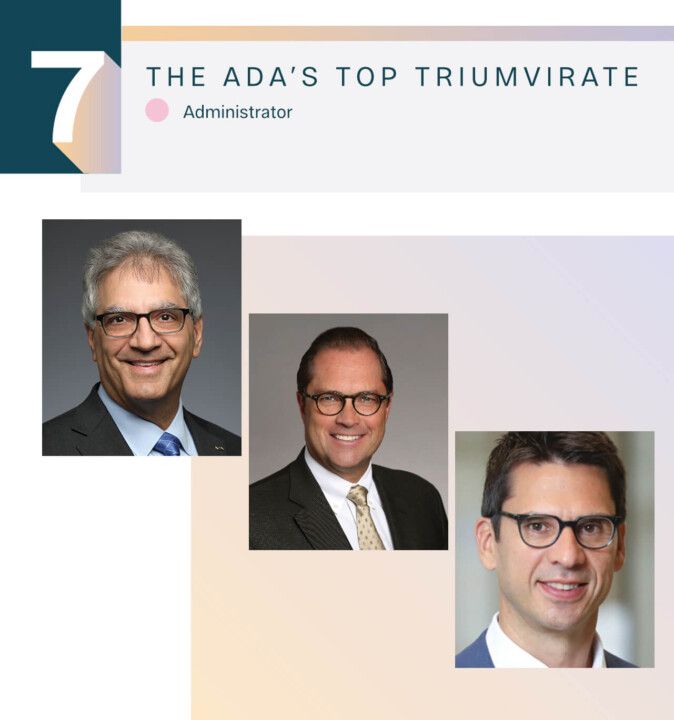
Raymond A. Cohlmia, Michael Graham and Marko Vujicic
Executive Director; Chief Lobbyist; and Chief Economist, American Dental Association
Chicago; Washington, D.C.; Chicago
Last year: 13 (all)
IN HIS ADDRESS to the American Dental Association’s House of Delegates last October, Dr. Cohlmia painted a rather grim picture of the organization’s current status, citing its reduction in market share from 72 percent in 2015 to just 59 percent today. “If our goal is to be under 50 percent in the next seven years, we’re right on target,” he said.
He set forth a three-step plan to stem the decline. One, revamp the ADA’s business model according to the principles of customer focus, global presence, sustainability, innovation and nimbleness. Two, “to drive a digital initiative” embodied in the reimagined ADA Member App, which debuted at SmileCon 2022 and can make it easier for doctors to engage with the organization on numerous fronts. And three, ensuring ADA leadership “reflects the changing face of dentistry, with more female dentists, more early-career professionals and more racially and ethnically diverse dentists.”
He’ll get help in these herculean efforts from his compatriots Vujicic and Graham. The former heads the ADA Health Policy Institute, which has focused of late on efforts to “better understand the root causes of the persistent labor shortage in dental offices, and to shed light on how rapidly we are going to see a generational turnover among the dental workforce,” he tells Incisal Edge.
Graham, meanwhile, will be his usual busy self on Capitol Hill, further cementing his reputation as one of the most effective industry lobbyists. (Vujicic was there earlier this year, sharing his insights about DSO growth, the nation’s oral health and more with the Senate Finance Committee.)
The ADA is at an inflection point. This top-tier triad, though, will work tirelessly to set it up well for the coming years. Future versions of this list will indicate how successful they were.
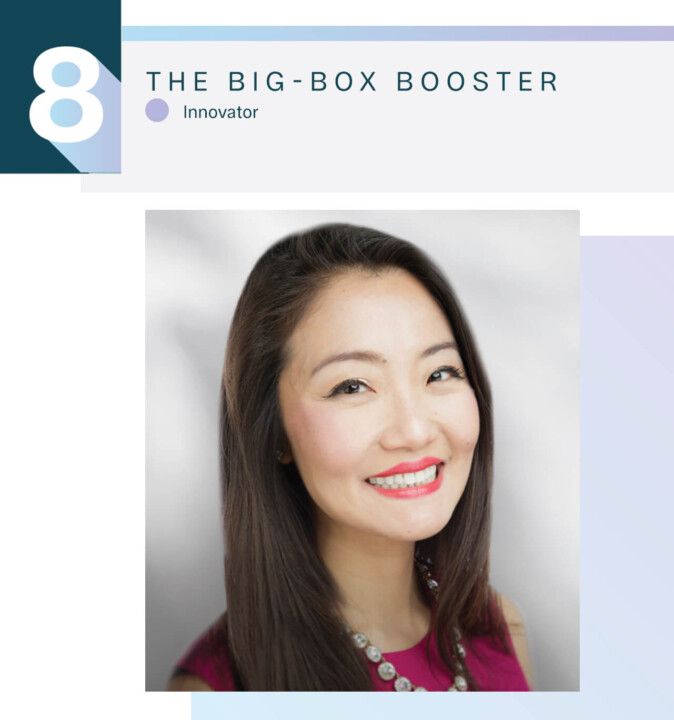
Victoria Yu
Chief Dental Officer, Walmart Health
Annapolis, Maryland
New
THE LARGEST brick-and-mortar retailer on the planet is renewing its fitful push to cater to shoppers’ whole-health needs, including dental services. Walmart Health, the division of Walmart that provides medical services inside stores, hired Dr. Yu in March as its new chief dental officer. She fills a role that had been empty since Dr. Rohan Parikh’s departure in 2021 (see “Big Ideas vs. the Big Box,” page 44), and among her top priorities is overseeing the launch of 28 new Walmart Health centers opening in 2024 in Dallas, Houston, Phoenix and Kansas City, Missouri. That will bring the total number of Walmart Health locations to more than 75 from just one in 2019.
Located in facilities next to Walmart Supercenters, Walmart Health centers employ doctors, dentists, behavioral health specialists, community health workers and others who offer primary and urgent care, labs, X-ray and diagnostics and more.
“We are uniquely positioned to deliver seamless, integrated care across a range of services, including best-in-class dental, in one location,” Dr. Yu says, citing Walmart’s frequent boast that 90 percent of Americans live within 10 miles of one of its stores.
“The greatest innovation we need is a collaborative model to improve patient outcomes,” adds Dr. Yu, who previously served as chief clinical officer at the DSO Mid-Atlantic Dental Partners. For example, a dentist who identifies a potential concern while performing a routine exam can arrange for the patient to be seen by a Walmart Health physician that same day if the patient desires.
Through a 10-year partnership secured with UnitedHealth Group last year, clinicians at 15 Walmart Health locations in Florida and Georgia began using UnitedHealth’s Optum for data analytics and tech support for their seniors and Medicare patients.
A cynic might posit that one of the Arkansas giant’s goals through Walmart Health is to boost foot traffic to its stores so that it can better compete with Amazon. That cynic might be right—but boosting access to dental care is nonetheless laudable. Says Dr. Yu: “Walmart Health is on a mission to transform the cost and convenience of health care in the communities we serve.” Can she help make it happen? Stay tuned.
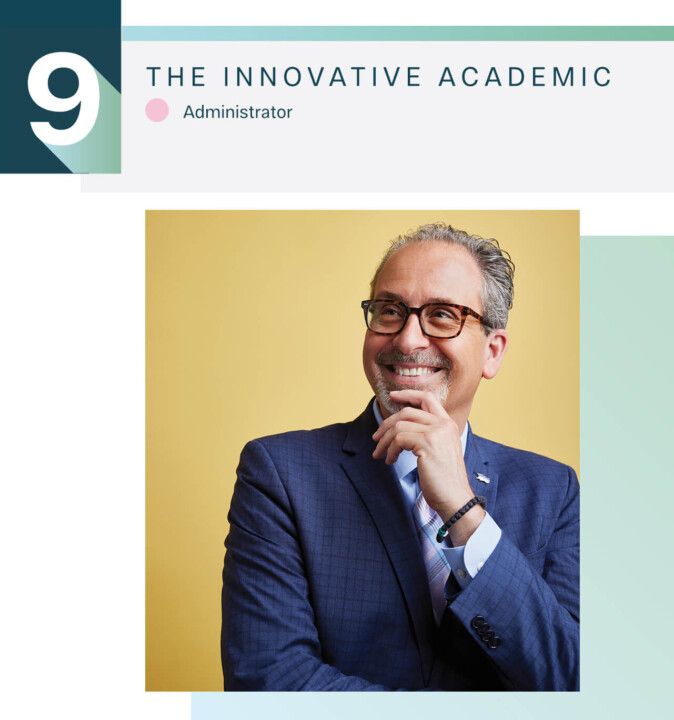
Scott De Rossi
Dean, Workman School of Dental Medicine
High Point, North Carolina
New
IN AUTUMN 2024, Dr. De Rossi, the inaugural dean of High Point University’s Workman School of Dental Medicine, will welcome its first class of 60 students—almost exactly a century after the university itself was founded. The $150 million dental program, the tenth school on HPU’s Charlotte-area campus and the Tar Heel State’s only dental school at a private university, was built with one overriding theme in mind: Dismantle the system.
That might seem an odd remit for a dental school, but Dr. De Rossi is unapologetic about ushering in an educational structure that is anything but hidebound. “Being a founding dean is a unique privilege and challenge, and helping start and grow a paradigm-altering dental program and clinical oral health network is a once-in-a-lifetime opportunity,” says Dr. De Rossi, formerly a professor and dean at UNC-Chapel Hill’s Adams School of Dentistry.
More than half of the new school’s curriculum, he says, will be grounded in experiential learning, following what he and Dr. Kevin Cain, his indispensable senior associate dean, call the CARE curriculum: Clinician-Advocate-Researcher-Entrepreneur. “It has been intentionally designed to lead the country in an innovative, research-based approach that immerses learners in authentic practice experiences within the first few weeks,” Dr. De Rossi says. “All learners will be expected to demonstrate their ability to perform core tasks through simulated and authentic patient care encounters to be eligible for graduation.”
“I’m confident our model will disrupt the traditional approach to dental education. Our students will be prepared for the future of health care, and their employers will notice that difference.”
Challenging the status quo in any industry is bound to meet at least a little pushback—perhaps especially so in academia. Dr. De Rossi is mindful of the cynicism but mostly shrugs it off. “There are always individuals and groups who will resist change, and many who are quite nervous about what we’re doing, but true leadership is about change,” he says. “For dental education, I say ‘tradition is the enemy of innovation.’ There is tradition in how students are taught, and how faculty teach in dental schools across the country; there is tradition in the solo private practice model espoused by many; there is tradition in organized dentistry; and there is tradition in the accreditation process and accreditation body. The most important, and biggest, hurdle we face is ensuring that we hire like-minded, innovative, future-focused team members who want to be a part of reimagining dental education, who embrace our mission and who embody our core values.”
The degree of success the school will have in 2024 and beyond will certainly bear watching. In the meantime, Dr. De Rossi, his deputy Dr. Cain and the rest of the executive team are preparing to hit the ground running. “I’m confident that our model will disrupt the traditional approach to dental education,” Dr. De Rossi says. “Our students will be prepared for the future of health care, and their employers will notice that difference. Some universities talk about being bold and courageous. HPU executes it, and our dental school is no exception.”
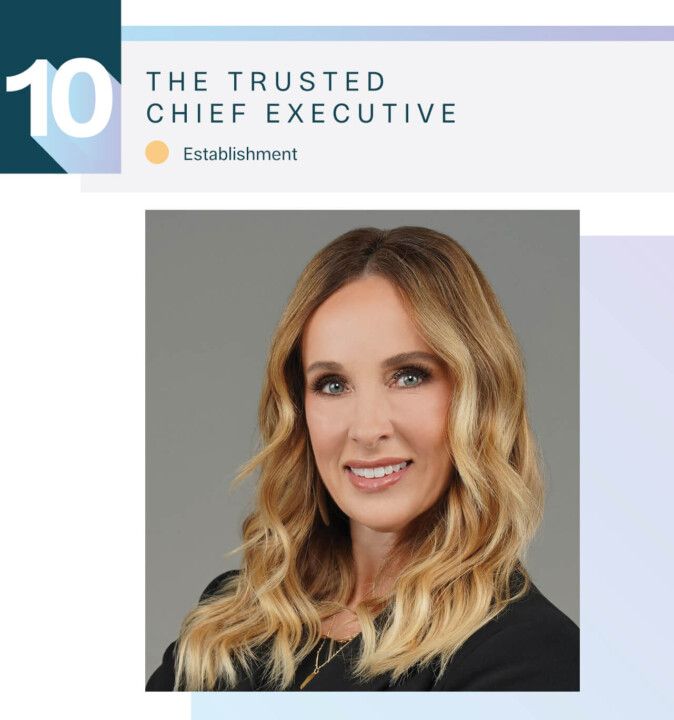
Stephenie Goddard
CEO, Glidewell
Newport Beach, California
Last year: 6
JIM GLIDEWELL started his eponymous company at his kitchen table in 1970; today it’s one of the largest and most innovative dental laboratories in the U.S. and has maintained its success in the face of would-be sector disruptors such as Dandy, a digital-lab startup that has raised an undisclosed (though reportedly immense) amount of money from a host of venture capital firms.
Goddard worked closely with Glidewell (the man) before being named CEO of Goddard (the company) on January 1, 2022. Glidewell himself remains the company’s president. “He’s always available yet gives me the room to suggest changes I believe may be key to our success,” she says.
So far, Goddard has proven adept in helping Glidewell adjust to digitization and the emergence of dental AI. This is fitting, given its own history of disruption—the transformational BruxZir restoration material, introduced in 2009, comes to mind.
Of late, it has become a market leader in same-day chairside milling with its In-Office Solution, an end-to-end system that seeks to make treatment more predictable. “We’re there to communicate and minimize any inconvenience clinicians may experience when presented with an unexpected situation,” she says.
Earlier this year, Glidewell introduced stackable multilevel surgical guides to help clinicians with implant restoration, a service to the estimated 60,000 dentists it works with each year (nearly half of practicing dentists in the U.S. restorative market).
Goddard credits Glidewell’s ability to innovate, in part, with its ability to eschew quarterly thinking. It’s easier, she says, “when you have the luxury of being a privately held company. Glidewell isn’t beholden to shareholders or a board of directors. We don’t have to hawkishly protect profits or stock prices. Jim often talks about Glidewell as operating with a nonprofit mindset—and he’s only half-joking.”
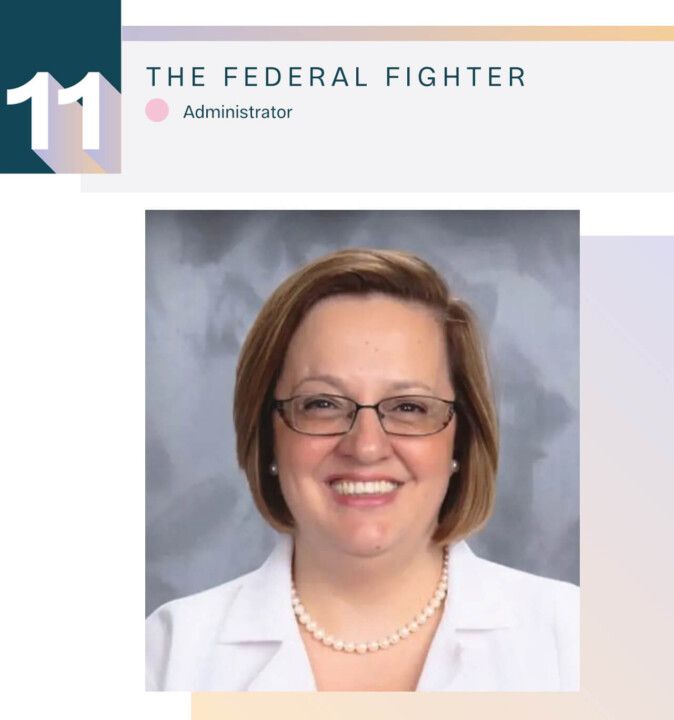
Natalia Chalmers
Chief Dental Officer, the Centers for Medicaid and Medicare Services
Silver Spring, Maryland
New
SINCE SHE BECAME the Centers for Medicaid and Medicare Services’ first chief dental officer in August 2021, Dr. Chalmers has successfully worked to ensure that in every state (and the District of Columbia), Medicaid enrollees who are pregnant or who have given birth within the previous 60 days can receive at least some level of dental coverage—a critical period when seeing a dentist is important because of heightened risk for gum disease and cavities.
She helped establish a formal review process to consider requests for Medicare coverage of dental treatment linked to certain other medical services, part of a CMS-wide effort “to consider opportunities to expand access to oral health coverage using existing authorities and health plan flexibilities across Medicare, Medicaid, the Children’s Health Insurance Program and the [Affordable Care Act] marketplace.” This work is in part the result of a Biden administration initiative that recently expanded the official definition of “medically necessary dental coverage.”
“These changes will strengthen access to dental services for more Medicaid and Medicare beneficiaries,” Dr. Chalmers tells Incisal Edge. “Access to oral health services is critical to allow beneficiaries and consumers to achieve the best health possible.”
Nonetheless, she says she’s worried about the continued high prevalence of oral disease in the U.S., to say nothing of the disruptions to dental care caused by the pandemic—missed checkups, say, leading to delays in diagnosing and treating disease. It also exposed lingering disparities in access to health care—a stubborn factor that she says she’s intent on combating as she works to broaden access under the auspices of a federal government whose attitude toward dental care has often been expressed at arm’s length.
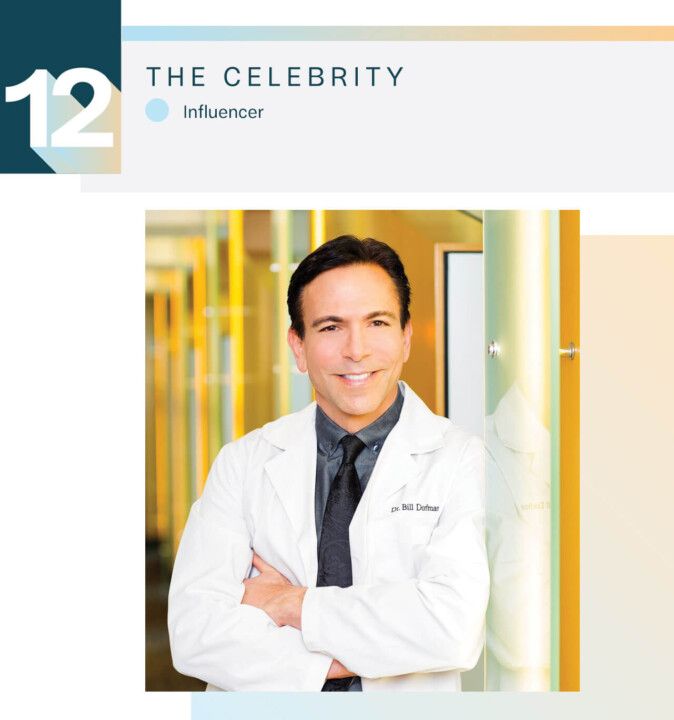
Bill Dorfman
Influencer, Television Personality
Los Angeles, California
Last year: 5
IT WOULD BE FAIR to call Dr. Bill Dorfman the quintessential Los Angeles cosmetic dentist given that he’s been making a name for himself since before the advent of the internet.
His first splash came as a recurring guest on daytime television—Oprah, The Doctors, The View, even Extreme Makeover—and as the author of two New York Times bestsellers, The Smile Guide (1990) and Billion-Dollar Smile (2006). “The thing that moved the needle the most for me was hiring a great publicist,” Dr. Dorfman says. “They will get you exposure. That was 40 years ago, and it made me way more successful than I would have been on my own.”
These days, he’s probably best known for his social media presence—and his six-pack abs, which appear on his timeline as often as a set of newly minted pearly whites. With 122,500 TikTok followers and 1.6 million on Instagram, the doctor offers a mélange of his business and nonprofit work, speaking appearances, cosmetic dentistry makeovers and, of course, shirtless pictures. “I typically work about 20 hours a week as a dentist, about four to five hours a week doing stuff for LEAP [a UCLA student skills program] and an hour a day at the gym. As far as TV, I make time for it.”
In late 2022, Dr. Dorfman was given a lifetime achievement award at Britain’s annual Dental Industry Awards—the first American dentist so honored. “They enumerated what an influence my presence on [television] had on the cosmetic dentistry industry for the whole world. It was really touching,” he says. “I wasn’t the creator of Extreme Makeover; I was just the conduit for sharing how cosmetic dentistry would change people’s lives.”
Next up? “I will be 65 this year, and I want to be the oldest guy to ever be on the cover of Men’s Health,” he says. Those abs just might help make it happen.
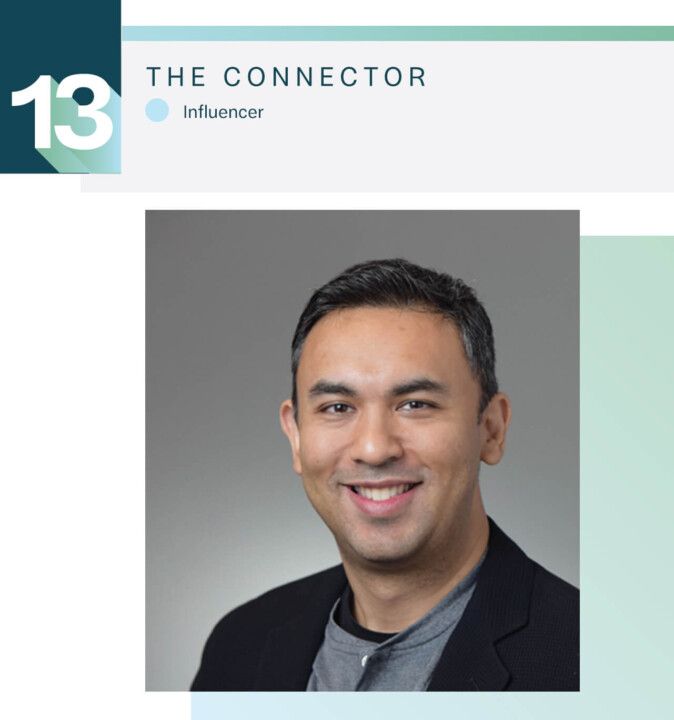
Abe Abdul
Creator, Dental Cupid
Cambridge, Massachusetts
New
IN ITS EARLIEST months, the fear and uncertainty of the pandemic threatened to lay waste to dentistry for a long time. What’s more, the immense difficulties of the early pandemic risked widening the gross imbalance in access to proper dental care.
Dr. Abe Abdul responded by founding Dental Cupid, a platform designed initially to connect those in need of care with dentists still open and practicing—and has since developed into a service that partners with hospitals to outsource dental emergencies to practitioners usually better able to treat them.
Roughly 2 percent of ER visits nationwide are for dental emergencies. They represent a $2 billion drain on the public fisc—and hospitals seldom have the equipment or trained specialists on hand to treat them effectively. By connecting needs with providers, Dental Cupid is helping solve this conundrum.
Unsurprisingly, Dr. Abdul is looking to implement AI for even greater efficiencies and economies of scale—worldwide. “Leveraging AI, we aim to create a platform that unifies oral health services for the global community,” he says. “Dental Cupid is set to revolutionize oral health.”
Fittingly, he was honored with the 2022 Excellence in Action for Dental Health Award from the ADA’s Council on Advocacy for Access and Prevention. A provider for Medicaid patients for two decades, Dr. Abdul and his team at Lux Dental Care (with three practices in the Boston area) are active in the Ryan White Dental Program, which treats those with HIV and AIDS. It’s a calling for him: “I urge all dentists who can afford to do so to provide Medicaid coverage,” he says. “The ADA and countless providers are working to improve access to care. By coming together and working on legislation, we can create a brighter future for those who rely on Medicaid for their health care needs.”
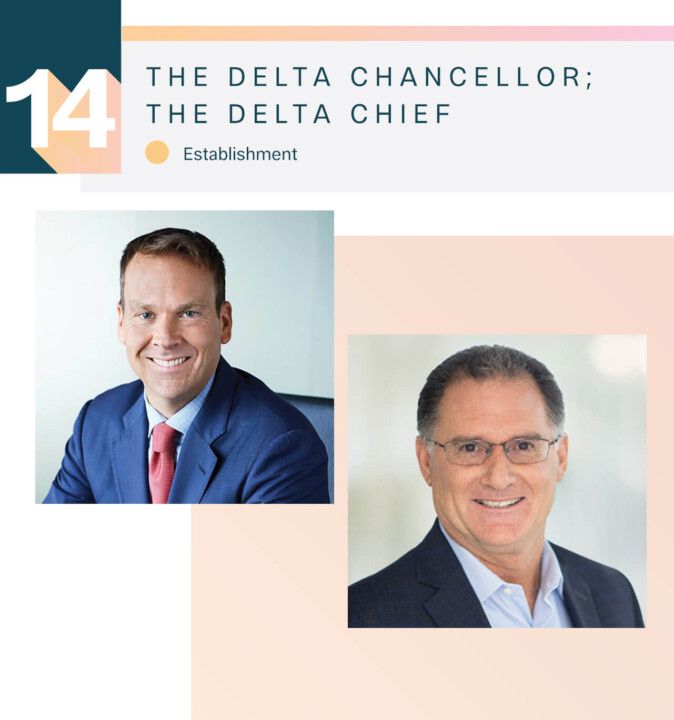
James W. Hutchison and Mike Castro
President and CEO, Delta Dental Plans Association; CEO, Delta Dental of California
Oak Brook, Illinois; San Francisco
Last year: 11 (Hutchinson); New (Castro)
YOU CAN’T TALK ABOUT Delta Dental without mentioning the man known as “Wells,” James W. Hutchison, now entering his third year helming the nonprofit umbrella over the nation’s largest dental benefits brand, covering more than 89 million customers. But the constitutional scholars among us here at Incisal Edge have suggested that if Delta’s constellation of 39 independent companies is akin to a loose confederation of sovereign states, then a big chunk of the power sits not solely with President Hutchison and the DDPA but also with its most powerful governors.
So, for 2023, we welcome Mike Castro to our list. He leads Delta Dental of California, encompassing not only California—a state whose far-reaching “California Effect” de facto imposes standards, regulations and accepted ways of doing business throughout the rest of the nation—but also 14 other states including New York, Florida, Texas and Georgia, plus the District of Columbia. All told, Delta California provides benefits to more than 44 million people, according to its website.
For Hutchison’s part, he continues his nation-building efforts, in addition to more targeted initiatives like a campaign to help increase the number of oral health professionals from historically underrepresented groups. (“As the nation’s oral health leader, we have a responsibility to tackle this issue head-on and make progress toward improving outcomes and advancing oral health equity for all,” he says.) Also on DDPA’s agenda: lobbying for the passage of the Oral Health Literacy Act. Introduced to the Senate in February, it’s aimed at addressing public education across all relevant federal programs.
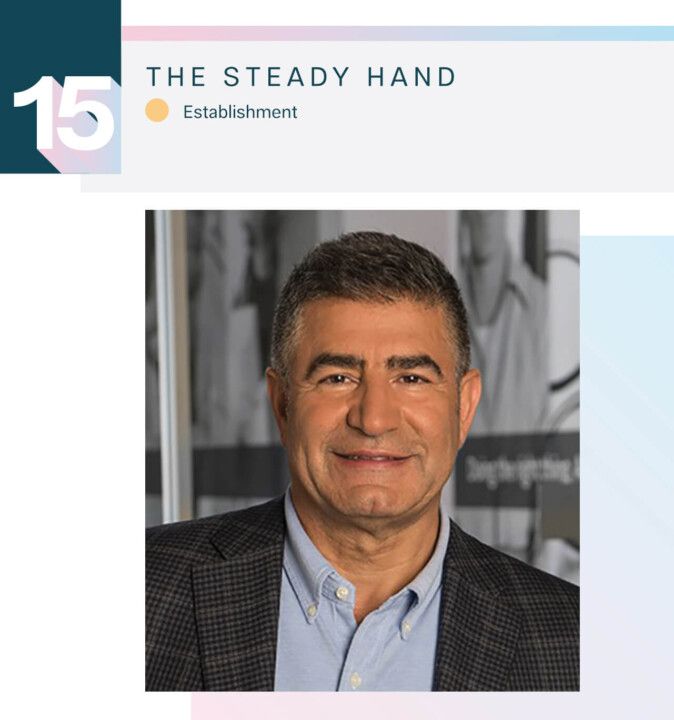
Amir Aghdaei
CEO, Envista Holdings
Brea, California
Last year: 9
ONE REASON AGHDAEI is a perennial on this list is that he’s not afraid to make big deals. Envista kicked off 2022 by closing on the sale of its KaVo Treatment Unit & Instrument business to Planmeca (see Heikki Kyöstilä, No. 22) for about $383 million. By April, it had closed on its reportedly $600 million acquisition of Carestream Dental’s intraoral scanner business and rebranded it as Dexis, housed under Envista’s equipment-and-consumables segment. In May, it announced its planned acquisition of Osteogenics Biomedical, Allotech and OBI Biologics—the makers of Cytoplast bone grafting products—for an undisclosed sum.
Those investments will help growth going forward through the end of 2023, Envista’s head of investor relations recently said, but the start of the year presented some challenges. Its imaging business—excluding the Carestream acquisition—has seen client demand slacken a bit as economic headwinds prompt some dentists to put off big-ticket purchases.
“Macroeconomic uncertainties such as inflation, interest rate increases and geopolitical challenges around the world [affect] dental professionals, especially the timing of investments for larger capital equipment,” Aghdaei says. “We continue to work with customers to provide the best imaging and diagnostic solutions that will improve their productivity and the predictability of their procedures.”
For the Dexis intraoral scanner business, that means building out Envista’s global distribution pipelines, working with existing partners and integrating the scanners into specialty function services to get the low- or high-end versions of the product into the hands of dentists.
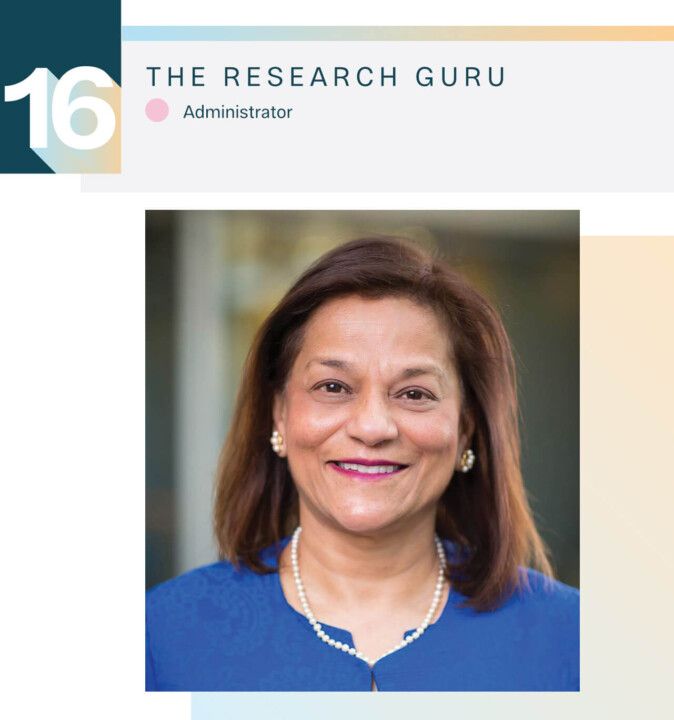
Rena D’Souza
Director, National Institute of Dental and Craniofacial Research
Washington, D.C.
Last year: 4
TWO YEARS AGO, we put Dr. D’Souza on the cover of our 32 Most Influential issue. We could probably do so every year, considering she remains in charge of the NIDCR, the organization with the largest dental R&D budget on earth.
Those funds grew by nearly 4 percent this year to $520.2 million thanks to an appropriations bill passed by Congress last December. Yet Dr. D’Souza’s influence isn’t solely a matter of dollars and cents. She also oversaw the production and publication of Oral Health in America, a data-driven research project released in late 2021, the first of its kind since a similar report from the U.S. Surgeon General in 2000.
Oral Health in America made a virtue of that two-decade gap, with more than 400 contributors examining the changes to the industry and to Americans’ oral wellness since the earlier report. “Oral Health in America showed that although some measures have improved over the last
20 years, there is still much work to be done,” Dr. D’Souza said in an NIDCR statement. (She declined to be interviewed for this piece.)
How to ensure that its recommendations don’t simply vanish? The NIDCR is currently in year three of a five-year strategic plan that runs to 2026 and which aims to tackle some of the problems the report highlighted, including high out-of-pocket costs, limited insurance coverage and lack of access to clinical care in rural areas. “In this nation, oral health care is experienced differently by different groups,” she has said. “Somehow, the scientific advances we’ve made have not been fully translated over to communities in need.”
Ongoing NIDCR research projects include more work into the oral-health effects of the coronavirus and how to boost the progress and uptake of digital tools such as 3D bioprinting and AI. Her director’s message in the strategic plan made this clear, lauding “technology as a driver of discovery,” as she wrote.
“Together, now is the perfect time to move forward.”
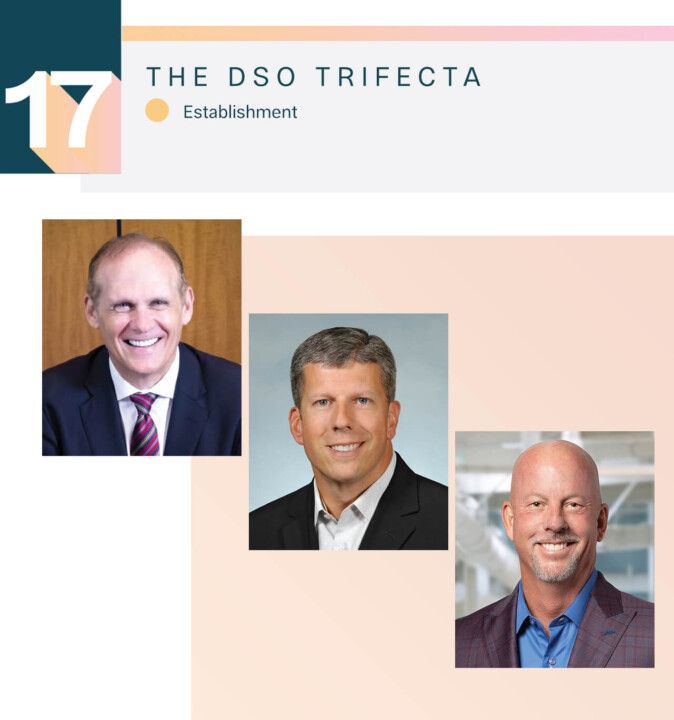
Pat Bauer, Robert Fontana and Steve Thorne
CEO, Heartland Dental; CEO, Aspen Dental; Founder and CEO, Pacific Dental Services
Effingham, Illinois; East Syracuse, New York; Irvine, California
Last year: 17 (all)
IT STANDS TO reason that practice consolidation under the protective DSO umbrella would increase at a time of such tumult as the pandemic. That happened, but such growth was perhaps not quite as substantial as some might have hoped—or feared.
In 2021, Bauer’s Heartland added 424 practices; in 2022, it boosted its numbers by 151 practices (84 de novo and 67 affiliates). It now encompasses some 1,700 practices across 38 states and the District of Columbia.
Fontana’s Aspen Group tacked on 110 practices in 2021 and 165 in 2022 (greater than the 120 it forecast when 2022 began); its network now includes more than 1,300 offices.
Pacific Dental, helmed by Thorne since he founded it 28 years ago, surpassed $2 billion in revenue in 2021, then added 150 new practice locations last year, bringing its total network to some 2,600 dentists across 915 practices.
Continued growth potential is certainly there. While not all dentists care for the DSO model, plenty do, valuing the ability to focus purely on dentistry. The total market is forecast to hit $454.7 billion by 2030, a compound annual growth rate of 15.8 percent, according to market research group Reportlinker.
As such, the growth experienced by the “Big Three” throughout the pandemic was healthy—but there’s plenty more to go. For his part, Pacific’s Thorne even saw the pandemic’s silver lining, crediting the DSO industry’s efforts to mitigate the worst by lobbying to include dentistry as an essential public service. “Practices were able to remain open to treat dental emergencies, helping lighten the burden on hospitals,” he tells Incisal Edge. “It was a challenging time, but one that elevated the profession to its proper place within our health care system.”
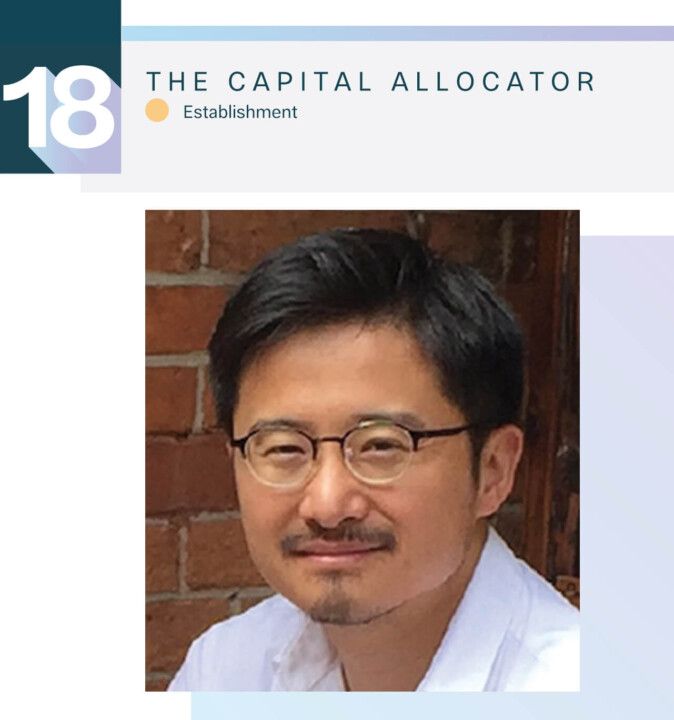
Dai Feng
Cofounder and Managing Director, CareCapital Group
Hong Kong
New
THERE ARE clinicians, social media mavens, doctors and others on this list. Feng might be the first we’ve ever featured who runs one of the world’s investment funds focused on dentistry, with a multibillion-dollar portfolio of more than 40 dental technology companies around the globe. Dai cofounded CareCapital in 2015, he says, because “dentistry has long lacked investors who fully appreciate clinical heritage and dental history. Most investors see the stable growth of dental brands as signal to cut R&D and training, which often leads to stagnation.”
A former partner at the noted private equity firm Warburg Pincus who studied engineering sciences at Harvard, Dai tells Incisal Edge he’s “proud that CareCapital has shown that investing in innovation and clinical training is a terrific way to grow and continue the history of the brands that inspire people.”
An example: CareCapital bought the Gothenburg, Sweden-based company Neoss Implants in late 2020 in a bid “to revitalize the brand with a digital workflow ecosystem and strong education programs.” CareCapital also successfully helped Shanghai-based Angel Aligners go public on the Hong Kong Stock Exchange in 2021; investors were drawn to its strong grassroots clinician support locally and CareCapital’s investments in the company’s technology for complex case treatment. CareCapital also recently created a library of first-edition works of orthodontists dating to the the 1800s—an unorthodox project Dai hopes will help his portfolio companies build shareholder interest and support in “the inspiring history of innovators [at] these beloved brands.”
While CareCapital’s core focus is investing in dental technology, Feng says he’s “concerned that overhyped [products are] eroding the trust of the dental community” among potential investors. Dental companies would be wise, he says, to eschew “visionary pronouncements” and buzzy business lingo about capital raises, land grabs and unicorn status to focus on clinical results and ease of use, or the industry could see “fewer dollars for credible innovations.”
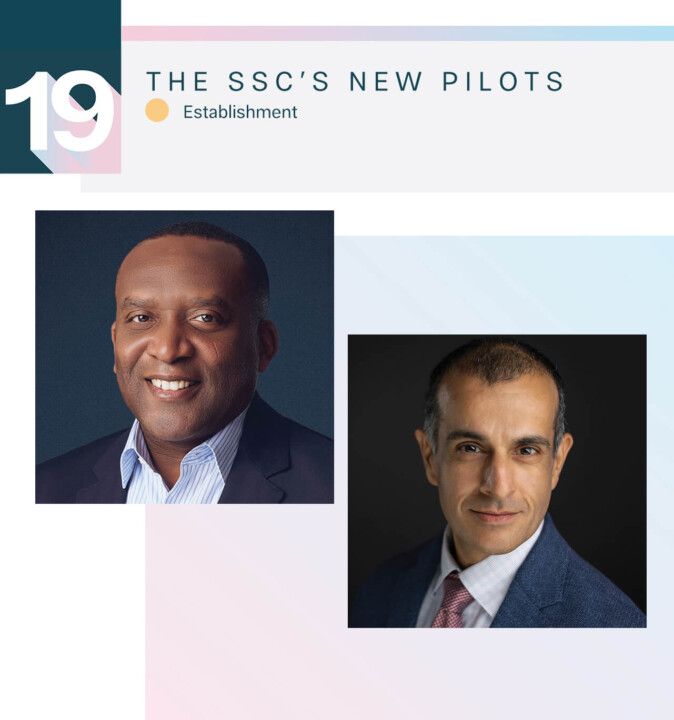
Brian Bussey and Parag Kachalia
CEO, Seattle Study Club; Chief Clinical Officer, Seattle Study Club
Kirkland, Washington; San Ramon, California
New (Bussey); Last Year: 21 (Kachalia)
AMONG THE first things Bussey did upon being named CEO of the venerable Seattle Study Club in July 2022 was appoint Dr. Kachalia the organization’s chief clinical officer. (He had spent the previous two years as SSC’s director of educational development and industry relations.)
In some ways, Bussey was an unorthodox choice for founder Michael Cohen’s company, established in 1992 and currently boasting 250 affiliated clubs worldwide. But in another sense, appointing the longtime executive in the health care and hospital space is simply an acknowledgement of the growth SSC has enjoyed, and a pivot toward the future.
Will SSC lose any of its core identity as it transitions from a founder-led organization to one led by professionals? And does a business like this need a dentist as CEO, or can it thrive with a more traditional executive in the Bussey mold?
Dr. Kachalia is admirably candid. “All parties need to understand the principles SSC has been built on, while understanding that the world has evolved over the last 30 years,” he tells Incisal Edge. “I do not believe that SSC needs a dentist as CEO, but I feel strongly that at the leadership level, clinicians should be involved.”
The next few years will be vital. Still, Bussey has been hard at work: Last November, Revere Partners—a venture capital firm focused on oral health—announced partnerships with both SSC and the new Workman School of Dental Medicine at High Point University (see Scott De Rossi, No. 9). The aim is to help boost innovation and deliver technology as efficiently as possible. Assuming those goals are met, the Bussey/Kachalia partnership might be just what Dr. Cohen ordered as he passes the baton.
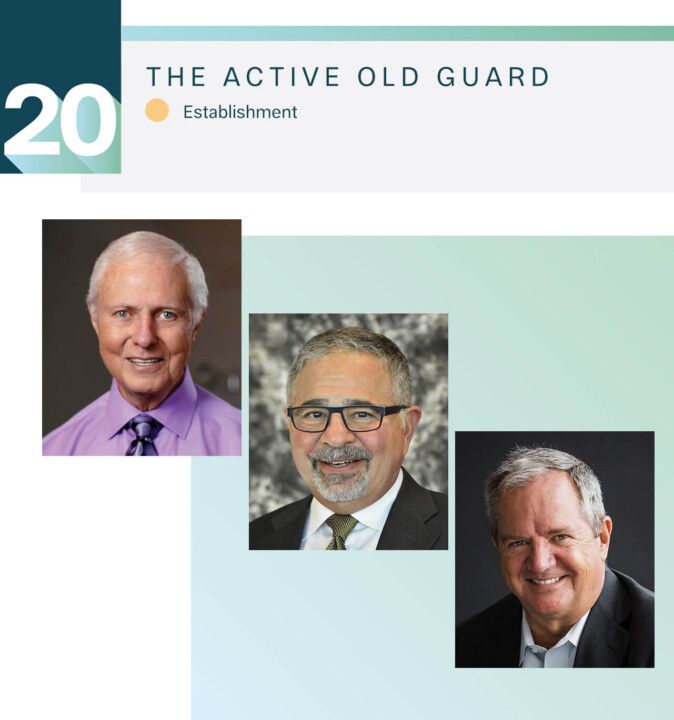
Gordon J. Christensen, John Kois and Frank Spear
Founder, Practical Clinical Courses; Founder and Director, The Kois Center; Founder and Director, Spear Education
Provo, Utah; Seattle; Phoenix and Seattle
Last year: 11 (all)
CLINICAL AND continuing education would not have come as far as fast as they have without this seminal trio.
Dr. Christensen, who was on the cover of this issue a year ago, has hardly slowed down at age 86. The accomplished prosthodontist still lectures around the world and remains CEO of Practical Clinical Courses, the education platform he cofounded with his wife, Dr. Rella Christensen. The couple’s monthly Clinicians Report, founded in 1976, continues to be read by an estimated 100,000 dentists from more than 90 countries. In late 2022, he was honored with the Global Prosthodontics Legend Award.
Dr. Kois, 72, founded the Kois Center in 1994 and built it into one of the most respected educational environments for advances in aesthetic, implant and restorative dentistry, with a course catalog of more than 1,500 lessons, many of which are available in person at its Seattle headquarters and virtually (a lifeline for practitioners during the pandemic).
To that end, Dr. Spear’s eponymous academy was perhaps best equipped for the mass migration to virtual instruction during 2020 thanks to its enormous existing catalog of online classes in addition to on-campus seminars and workshops. Dr. Spear, 70, continues to work at his Seattle private practice, serve as an affiliate professor at University of Washington’s graduate prosthodontics program and make appearances at events such as the American Academy of Cosmetic Dentistry conference this April in Grapevine, Texas, where he presented on integrating minimally invasive concepts in complex treatment plans.
These three giants can’t go on forever, of course—but their legacy, both individual and shared, seems certain to.
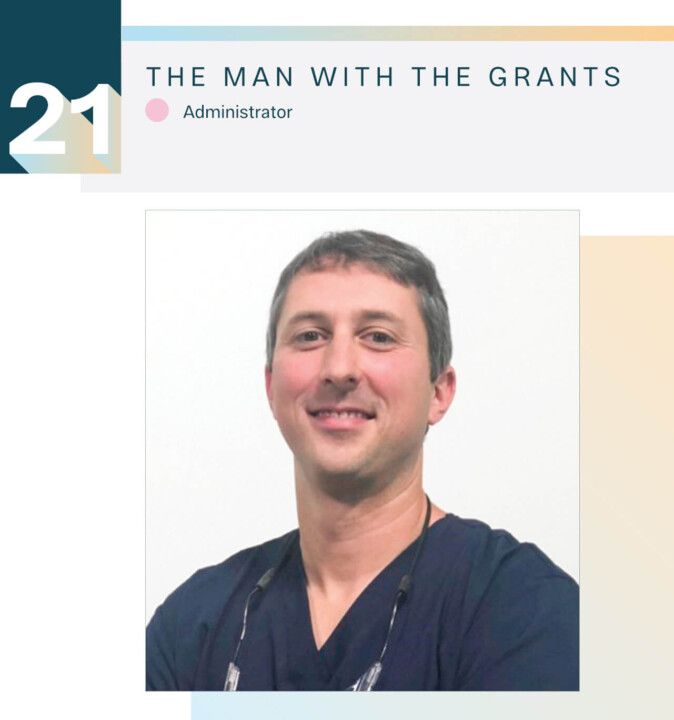
Adam Barefoot
Chief Dental Officer, Health Resources and Services Administration
Atlanta
New
THERE’S LITTLE disputing that dentistry has a shortage of dentists, hygienists and other crucial staffers. This hurts some communities more than others, of course, and a coalition of groups led by the American Dental Association has urged Congress to address these workforce shortages.
Last May, the federal Health Resources and Services Administration (HRSA) appointed Dr. Barefoot as its new chief dental officer, tasked with, among other things, programs targeting shortages and their negative impact on oral health. “HRSA works to identify shortage areas, recruit providers to these areas through the National Health Service Corps program and expand the dental workforce through grants to build capacity through training and reducing the financial burden for providers,” says Dr. Barefoot, who was previously Georgia’s state dental director, where he oversaw programs aimed at reducing oral health disparities in the Peach State.
Today his agency is financing grants for oral health workforce activities across 37 states—money that supports roughly 100 programs, particularly in underserved areas—and this spring, it launched an oral health education and awareness campaign targeting patients of community health centers, rural populations, people with HIV and caregivers of young children. “Several historical projects are also continuing through the Maternal and Child Health Bureau to integrate oral health and primary care in safety net settings, bringing a focus on whole person health,” Dr. Barefoot says.
National integration, he adds, is key. “A lot of opportunities for this type of work is made possible through the network of health centers across the country. These continue to be a lifeline for underserved populations.” Success is a marathon, not a sprint, but Dr. Barefoot is optimistic, citing “recent data showing dental programs serving 5.7 million patients across nearly 1,400 health center networks.”
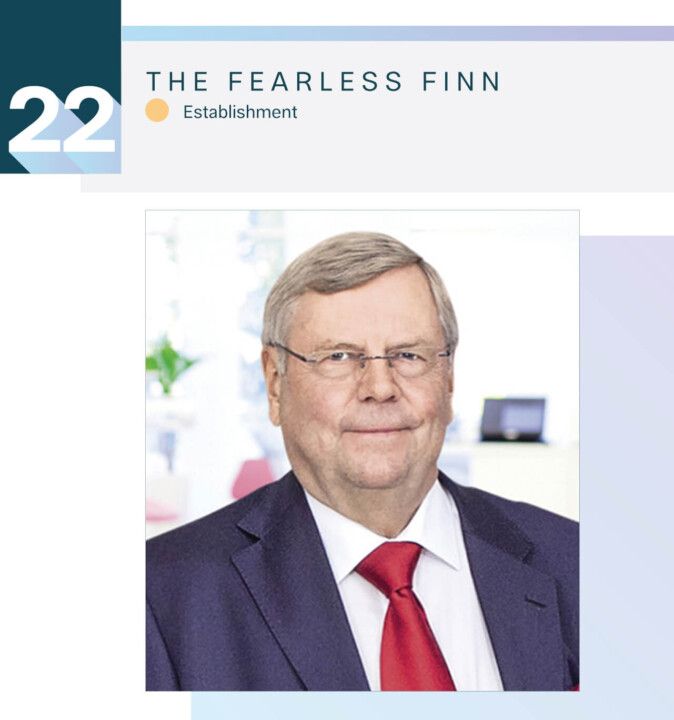
Heikki Kyöstilä
CEO, Planmeca
Helsinki, Finland
Last year: 19
THE LOW-KEY Kyöstilä, 77, Finland’s second-richest person (his net worth was $2 billion as of early June), founded Planmeca in 1971, using elegant Finnish design to start the company as a small maker of dental stools and cabinets.
Has his little operation ever grown: Planmeca is now the world’s largest privately held dental equipment manufacturer, employing more than 4,500 people and generating an estimated $1.3 billion in annual revenue. Its $455 million purchase of KaVo from Envista (see Amir Aghdaei, No. 15), effective on the final day of 2021, broadened its reach further (as well as taking KaVo private once more; the restructured company remains an independent concern headquartered in Biberach, a town in southwestern Germany).
Kyöstilä, who declined to be interviewed for this piece, has said he has no plans to sell or retire—an assertion underscored by the array of new Planmeca products on display at this year’s International Dental Show in Cologne, Germany. Among them: the Viso G3 (which handles all extraoral imaging needs, both 2D and 3D, as well as a new intuitive and adaptive interface); new features for the Romexis software platform, including an ortho simulator; a mobile scanning station; and the PlanMill 35 chairside milling unit, which boasts both wet and dry processing.
The tireless billionaire has come a long way from stools and cabinetry to build a global colossus. Staying in the game ensures that his influence endures.
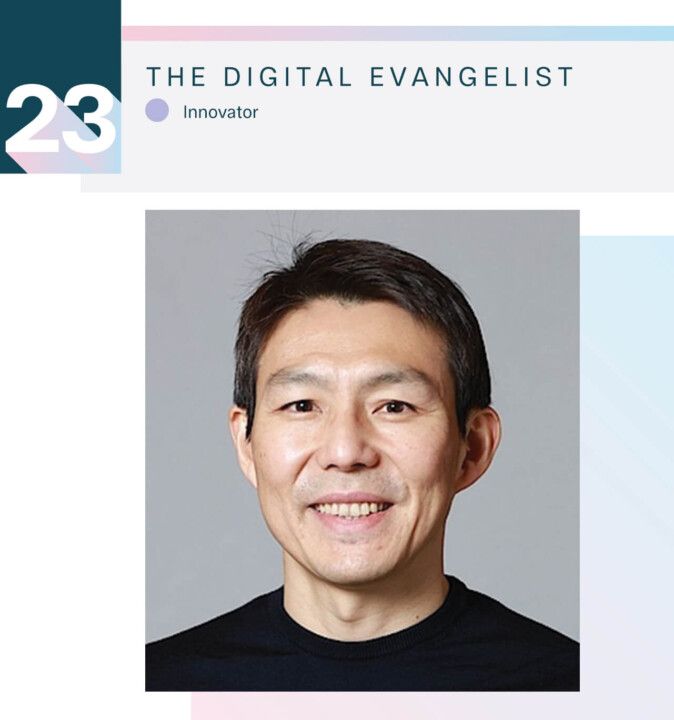
Gyu Bum “GB” Ko
CEO, MEDIT
Seoul, South Korea
New
A MANUFACTURER of intraoral scanners headquartered in South Korea’s capital city, Medit was bought for roughly $1.9 billion late in 2022 by private equity fund MBK Partners. That deal—which totaled more than three times the sum Envista Holdings spent for Carestream Dental’s intraoral scanner business in 2021—came after Medit’s substantial growth had made it a leading digital dentistry solution in recent years.
Known for its i700 intraoral scanner, Medit also recently launched the i700 wireless—obviating the need for cables connected to the hubs—and the i600 platform, which GB, named CEO in June 2020, says addresses “the primary barrier to entry for digital practices: cost.
“As a result,” he adds, “we have experienced rapid growth in our user base and scanner installation figures, with Q1 of 2023 recording close to 50 percent growth compared to the previous year. These figures affirm our conviction that the digital trend in dentistry is gaining momentum”—as is demand for Medit’s products and services.
“In addition to dental clinics and professionals adopting digital practices, patients are now demanding digital technology and consultations in the clinic,” he says. “They’re also looking to move away from traditional impression methods, which can be uncomfortable. However, many dentists and dental professionals find it challenging to adopt digital technology, and the industry needs to develop products that are easier and more convenient to use. There is also a need for more training and education for digital dentistry for clinical stakeholders, including doctors and nurses.” His company, he says, intends to be on the leading edge of all of it.
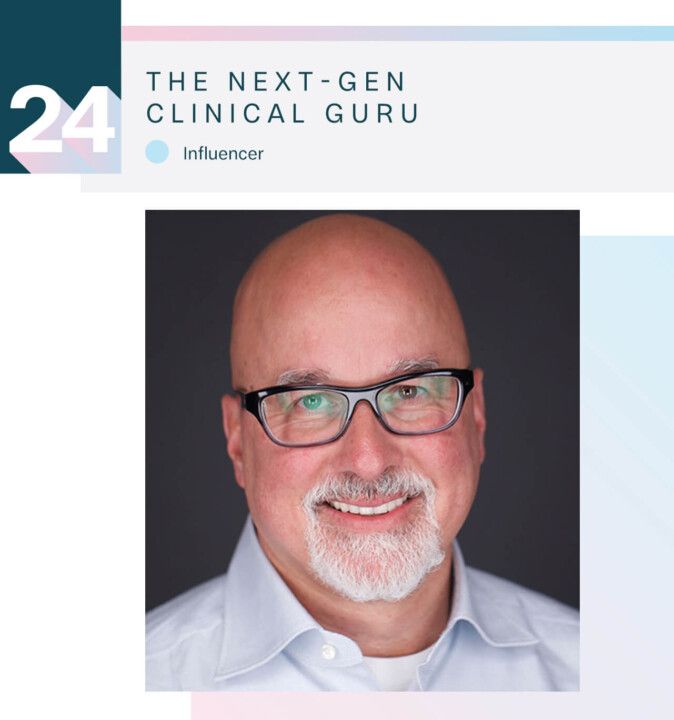
Bob Margeas
Academic, Clinician
Des Moines, Iowa
New
CHRISTENSEN, KOIS, SPEAR . . . Margeas?
Dr. Bob Margeas has quietly turned himself into a next-generation—perhaps the next-generation—clinical leader and lecturer, a feat, as we keep an ever-closer eye on his career, that lands him on the 32 Most Influential list for the first time this year. A graduate of the University of Iowa College of Dentistry, Dr. Margeas is an adjunct professor at that school’s Department of Operative Dentistry, in addition to running a successful private practice in Des Moines.
His work focuses on restorative and implant dentistry, about which he has written and edited dozens of articles. He’s editor
in chief of Inside Dentistry, sits on the editorial board of Compendium and is a contributing editor to Oral Health in Canada.
He also lectures some three dozen times a year to packed rooms about implants, esthetic
dentistry and practice management, among other topics. He seems well-placed to become the next face of clinical dentistry when the current titans (see No. 20) have left the scene: a fine orator, deep dental thinker and congenial man.
Dr. Margeas, who declined to comment for this article, has said in lectures and podcasts that one of his favorite phrases to tell a patient is, “I’m just the referee. I call ’em like I see ’em.” He employs the metaphor often when he’s tasked with delivering patients unwelcome news—that they need multiple implants, for example—and he hopes they take it as a fair, unbiased presentation of the facts. If the patient wants a second opinion, he offers them their X-rays and a referral for free.
Well, Dr. Margeas, we’re calling it how we see it. Keep doing what you’re doing, and we’ll wager you will indeed be the new face of clinical dentistry in the years ahead.
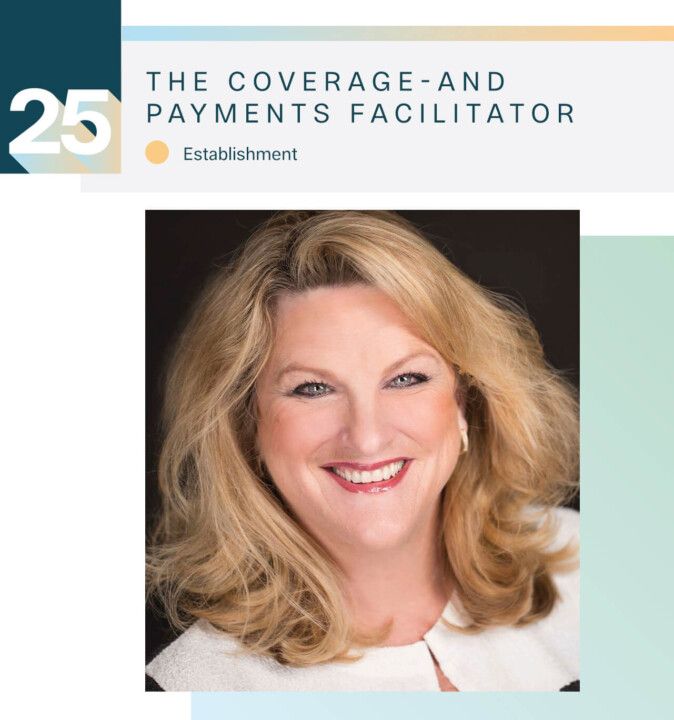
Bete Johnson
Senior Vice President and General Manager of Dentistry, CareCredit
Costa Mesa, California
Last year: 22
GIVEN THAT dental insurance is often nothing of the sort (see “Profits, Politics . . . Patients,” page 48), CareCredit’s steadfast mission to provide financing solutions for patients and practitioners alike has perhaps never been more needed in Johnson’s entire 18-year tenure there.
Today, there are more than 12 million active CareCredit cardholders. That impressive figure doesn’t come as a surprise surprise—CareCredit offers zero-interest financing for six, 12, 18 or 24 months, depending on a person’s existing credit status. It has also been a pioneer of contactless payment since long before the pandemic by using QR codes, custom links, digital payment features and integrations with existing practice management platforms. Patients’ account applications are reviewed instantly; those approved can immediately begin using the company’s services.
“CareCredit empowers patients, first and foremost, to access the dental care they want and need, when they want and need it,” Johnson tells Incisal Edge. “We are there during the pivotal moments of the financial conversation between provider and patient, so care is not delayed or
rejected outright because of cost. If we can be the solution that means a person goes through with the care they need, we have done our job.”
The company has worked with providers for more than 35 years; an estimated 80 percent of U.S. dental practices currently accept it. Indeed, the business, owned by Synchrony Financial, is the only financing solution endorsed by the ADA for its roughly 160,000 dentist members (the ADA announced a 10-year renewal of the partnership earlier this year).
“The more transparent and forthcoming a provider is with treatment costs, and the earlier this pivotal financial conversation takes place, the better the chances are for a patient to follow through with recommended treatment,” Johnson says. “That translates to better oral health for many people.”
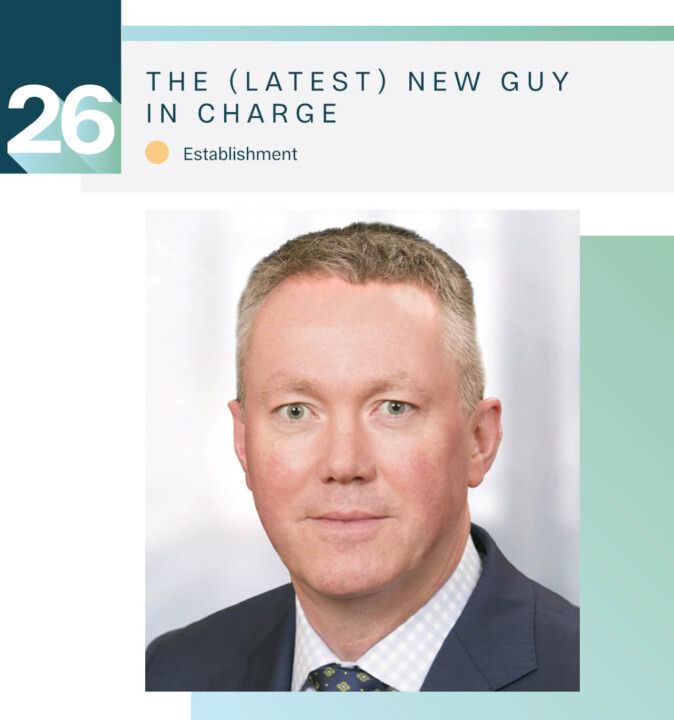
Simon Campion
CEO, Dentsply Sirona
Charlotte, North Carolina
New
DENTSPLY SIRONA’S fourth CEO in six years, Campion could surely have picked an easier job to accept. Since the 2016 merger of Dentsply and Sirona, annual sales have been basically flat, logging $3.9 billion in 2022, while earnings before interest and taxes have declined from $800 million in 2017 to an expected $620 million in 2023. Still, the company’s leadership in CAD/CAM technology, imaging, endodontics and its non-dental division, Wellspect, among other things, help it maintain its stature as a major industry player.
Campion joined Dentsply Sirona in September 2022 from Becton, Dickinson and Company (BD), where he was president of its interventional and medical segments. In 2017, when BD acquired C.R. Bard—a manufacturer of “vascular access” devices such as catheters—he oversaw integrating the companies’ surgery businesses into one, taking Bard private and ultimately leading the broader segment to growth.
Dentsply Sirona’s “transformation” is progressing as planned, with promising momentum, Campion says. “We have been working to implement structures to make us more agile, decisive, collaborative and effective. A milestone on this journey is DS Core, the new cloud-based ecosystem, enabling dental practitioners to run their practice with peace of mind, connect all data in one place and keep it secure.”
The future for which Campion is preparing Dentsply Sirona will be distinguished by its increased reliance on technology, focus on preventative care and prioritizing accessible care for all. “Our strategy is to transform dentistry by digitalizing dental workflows, driving product and service innovation, and delivering an exceptional customer and patient experience,” he says. We wish him all the luck in the world. Given Dentsply Sirona’s turbulent recent history, he will likely need it.
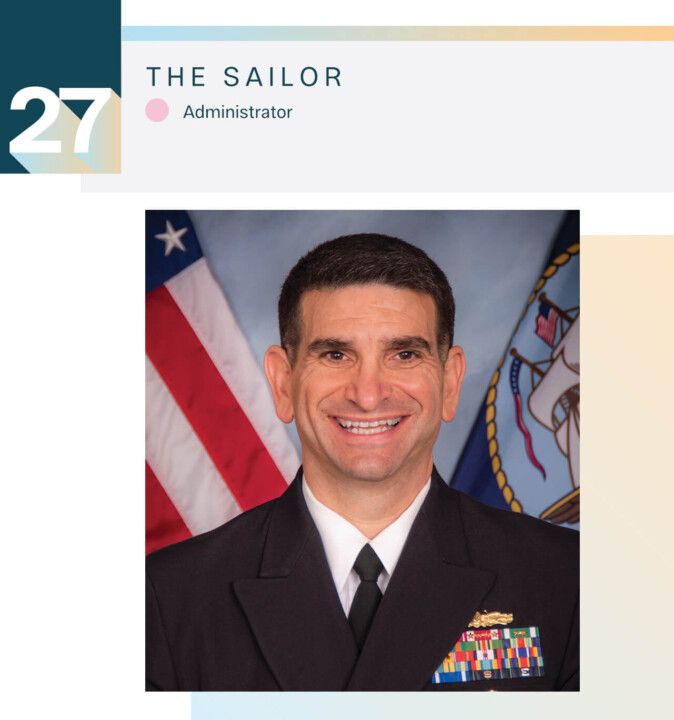
Rear Admiral Rick Freedman
Chief, U.S. Navy Dental Corps
Falls Church, Virginia
New
DENTISTRY MIGHT BE among the last things that come to mind for most people when they think about the military, but soldiers’ oral wellness is just as important as every other aspect of their health and well-being. Let’s also not forget about the dentists who care for them. In a job market where solo practices are becoming less common, large groups and DSOs are quickly becoming dominant forces, shrinking the number of employers for doctors to choose from. Military dentistry offers an attractive alternative.
It’s therefore good for both the profession and practitioners that military dentistry remains robust, competitive and led with vision and engagement. That’s why Dr. Freedman has jumped onto our list. Promoted to rear admiral this February, he oversees the 1,300 active-duty and reserve Naval dentists practicing in the U.S. and abroad—the most of any military branch.
His personal, professional and service history is impressive. A Philadelphia native, he earned a bachelor of science from the University of Pittsburgh and his DMD from the same university’s School Of Dental Medicine. He also received a master’s degree in health sciences from George Washington University and a certificate in comprehensive dentistry from the Naval Postgraduate Dental School.
Having received his commission as an ensign in 1989, Dr. Freedman was later the executive officer of the U.S. Naval Hospital in Okinawa, Japan. He has also been commander of the Naval Hospital at Camp Lejeune in Jacksonville, North Carolina. He served a stint in Afghanistan. And we presume he has great teeth as well. The Navy’s dentists, and their countless charges all around the world, would seem to be in highly capable hands.
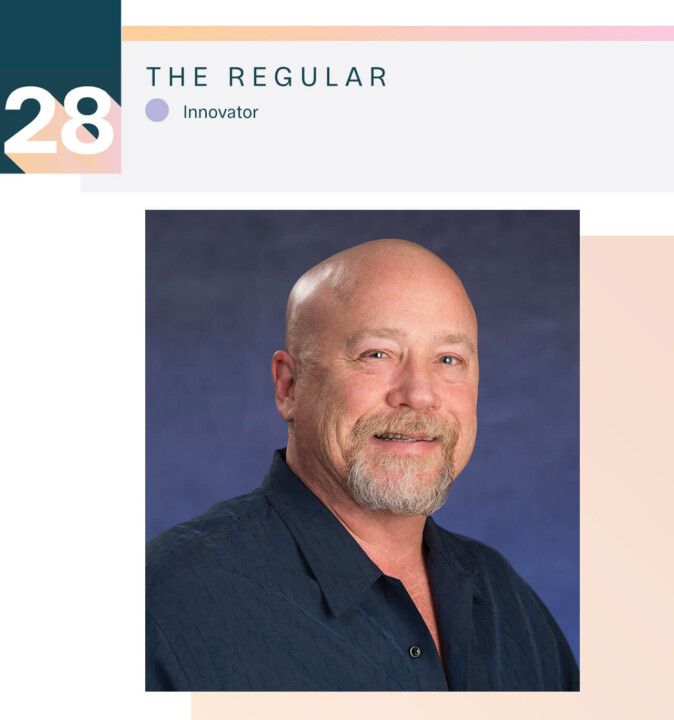
Howard Farran
CEO, Farran Media, Dentaltown, Orthotown
Phoenix
Last year: 18
CALL HIM A LIFER: This is our seventh annual 32 Most Influential list, and Dr. Farran’s seventh appearance thereon. Dentaltown.com, Farran Media’s first platform—founded in 1999, during the Pleistocene Web 1.0 era—continues to resonate with its audience, garnering 10,500 new members last year (for a total of 265,000)—interest he says is driven by economic concerns: “Inflation is by far the biggest problem facing dentistry in 2023. When insurance companies set dentists’ fees but the free market dictates their costs and prices for staff and equipment, it’s easy to go from running in the black to being in the red.”
In articles and online message board posts, Dentaltown’s peer-to-peer community has shared strategies for negotiating rates, going out-of-network and running a leaner practice overall.
His readers are there for one another: “In articles and message board posts, Dentaltown’s peer-to-peer community has shared strategies for negotiating rates, going out-of-network, running a leaner practice and more.”
Dentaltown hit milestones in the last 12 months, uploading the 500th course to its on-demand CE library and celebrating its twentieth annual Townie Choice Awards. Yet the formerly popular annual “Townie” conference is no more, and Dentaltown and its ilk can feel a bit long in the, er, tooth, relics of the blog age in a TikTok world. The irrepressible Dr. Farran plans to take it as it comes, relying on audience loyalty to help his outlets continue to grow. “I’m consistently impressed with how we help Townies build camaraderie and help each other succeed,” he says. He’ll need more of that in the coming months to continue his unbroken streak of appearances on this list next year.
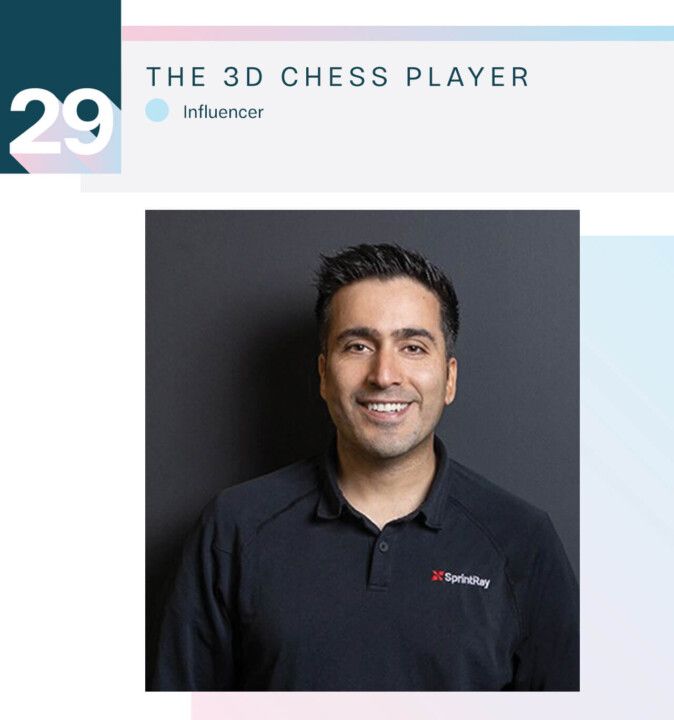
Amir Mansouri
Cofounder and CEO, SprintRay
Los Angeles
New
FOUNDED IN 2014, SprintRay is a market leader in one of the fastest-growing areas of dentistry: 3D printers. Mansouri cofounded the company with fellow University of Southern California Marshall School of Business student Jing Zhang and Hossein Bassir, an industrial engineer based in Malaysia. SprintRay’s potential edge: Unlike most 3D printer companies, it is narrowly focused on products for dentistry—an idea the founding trio got after Glidewell Laboratories purchased one of its printers in 2017.
Even within that market niche, SprintRay—whose “brand ambassador,” fittingly, is Usain Bolt, perhaps the finest pure sprinter in history—offers what it calls “a few carefully considered products”: dentures, night guards, clear aligners and ceramic crowns. Judging by its recent Series D fundraising round that raised more than $100 million last October, investors including SoftBank Vision Fund and the Hong Kong-based ZWC Partners like the strategy.
SprintRay does not disclose financials, but research from investment bank Stifel estimates that it has sold 15,000 units in the United States to date, in part because the products’ value to dentists and patients is clear. That figure nonetheless indicates that there is substantial room for growth as increasing numbers of practices adopt the technology in-house.
The company launched its Ceramic Crown 3D Printing Ecosystem this February, for example, enabling dentists to print a crown for just $20 to $25 and charge roughly $900, according to Stifel analysts’ estimates. The fabrication can happen in less than 45 minutes, helping dentists eliminate the multiple patient visits required when a mold is sent away to a lab and a crown is shipped back.
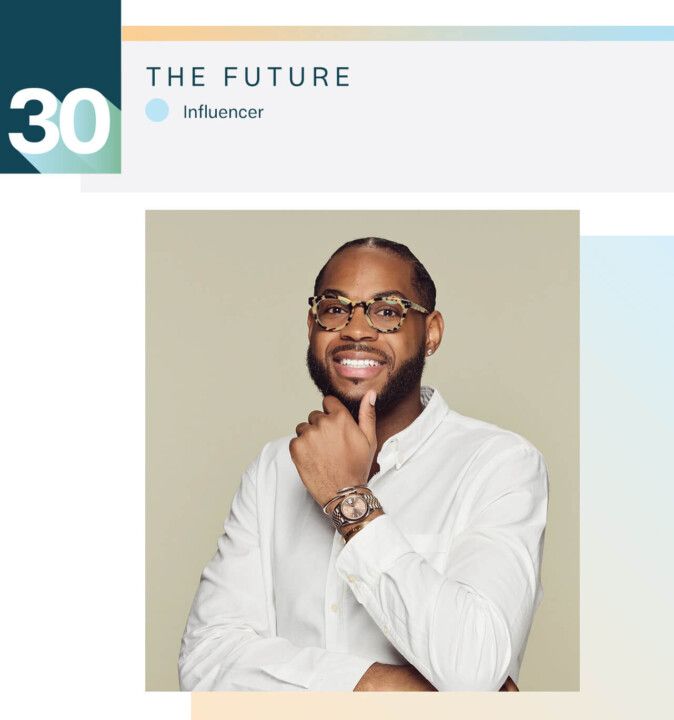
Quodarrius Toney
Cosmetic Dentist, Activist
Atlanta
New
DR. TONEY, also known as “Dr. Q,” is the kind of dentist we hope to see much more of in the coming years. The 2021 graduate of Howard Dental School is already an accomplished cosmetic dentist who has made elevating communities of color an integral part of his professional brand and mission.
Dr. Toney, 27, who grew up in Memphis, knew he wanted to be some type of doctor from an early age. “I spent every summer engaged in some type of community enrichment,” he tells Incisal Edge. “Community support shaped me and helped me focus while guiding my career trajectory.” In 2012, at age 16, he was part of the inaugural cohort of Determined to Be a Doctor Someday (DDS), a pipeline program founded by Dr. Christina Rosenthal, a Memphis dentist, designed to expose students to medical professions. Dr. Toney shared the Good Morning America stage with Dr. Rosenthal this February, when she was presented with $18,000 in donations. “I am the first doctor in my family,” an emotional Dr. Toney said during the broadcast about his experience with Dr. Rosenthal. “Seeing someone who looked like me, we connected.”
Dr. Q is a thriving cosmetic dentist. He has made headlines working with celebrities such as GloRilla, a Memphis rapper, who shared her beautiful set of new veneers from Dr. Q online. He himself is a social media star: He has nearly 300,000 followers on TikTok and 165,000 on Instagram (@doctor.q_). “Early on, I saw social media as a vehicle,” he says. “I’ve leveraged my platform on TikTok to organically convert onlookers into students and patients. People get to know Dr. Q as a person, and that resonates with communities of color. As less than 4 percent of dentists are black, representation is extremely important.”
Looking ahead, he’ll continue to practice cosmetic dentistry at his new private practice, the Art of Aesthetics Dental Studio, which opens this summer in Atlanta. “It’s an art form—helping to build and shape confidence and self-love,” he says. “I aim to help people fall in love with their smiles.”
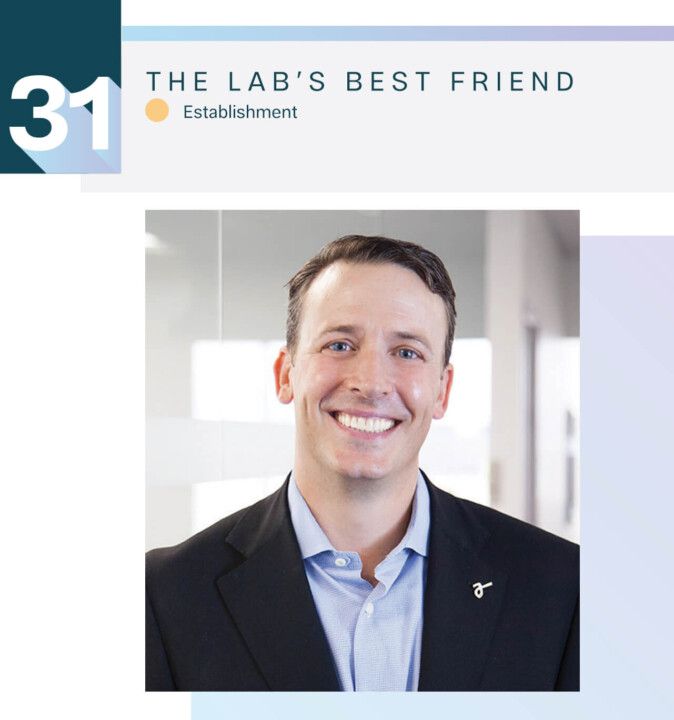
Anton Woolf
Co-owner and CEO, Argen
San Diego
Last year: 24
RUNNING ONE OF the most quietly innovative lab-partner companies in dentistry, Woolf has been a regular on this list over the years, and the recent past has underscored why.
For starters, Argen instituted “lean manufacturing” processes across its manufacturing centers in San Diego to
increase its yield of zirconia discs. “As a result, we’ve achieved milestones along the way,” he says. “Our zirconia disc sales, led by our ArgenZ HT+ Multilayer, have grown 124 percent. We also celebrated manufacturing our millionth disc.”
Argen’s corporate subsidiaries in Canada, the U.K. and Germany also saw growth in digital services with the opening in spring 2022 of Argen Canada’s Digital Center in Toronto, where the company offers “milled zirconia, PMMA, milled and printed bite splints and VITA Suprinity, as well as in-person 3Shape [denture] design courses.”
The immediate future looks bright; Woolf says 2023 is on track to be another record year. He elaborates: “Domestically, we announced several new products to help support dental laboratories: milled titanium bars for both fixed and removable restorations at the abutment level, milled cobalt chrome restorations, SLM RPD frames and ArgenZ high-definition zirconia milled at 90 degrees for greater characterization.” Argen also significantly boosted its equipment and software product offerings, including a new 3D printer and five complementary resins.
Busy times, with the same forecast ahead. “We’re excited about the future of the dental lab industry,” Woolf exults, “and our ability to provide a wide range of products to help our dental laboratory partners succeed.”
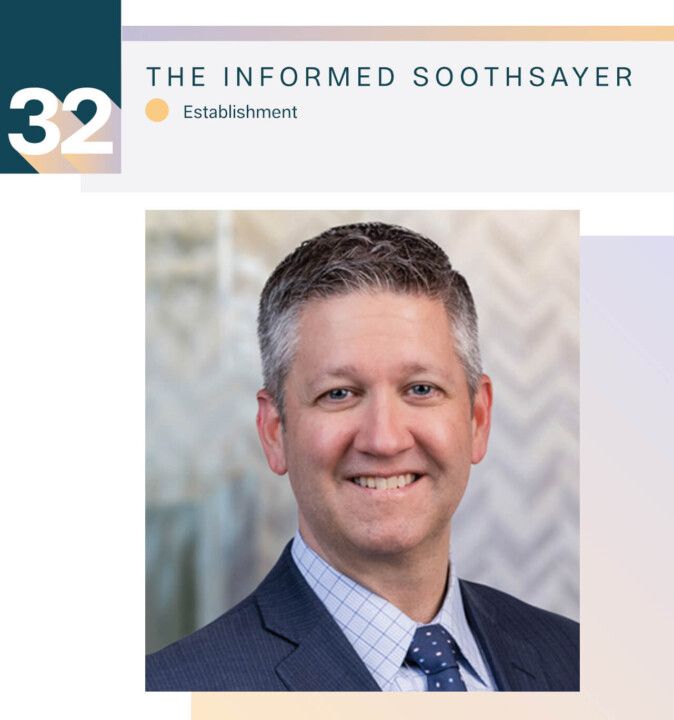
Jeff Johnson
Senior Research Analyst, Medical Technology, Robert W. Baird & Company
Milwaukee
Last year: 27
THE AFFABLE JOHNSON, industry analyst par excellence, is a fixture on this list. We’ll turn the floor over to him for his thoughts on dentistry’s immediate future.
“One of the biggest surprises in the immediate aftermath of the early Covid lockdowns was just how resilient dental demand is, not just in the U.S. but globally. From mid/late 2020 to early/mid-2022, dental industry growth was as good as we’d seen it for more than a decade.
“The going got tougher, however, as dental offices competed for consumer dollars as rising gas and grocery prices began to weigh on households. As such, 2022 was a tougher year for most dentists, with our checks suggesting office profitability likely fell some 20 percent from 2021 levels.
“As we move into mid-2023, risks and opportunities remain. After spending PPP funds from 2020 to 2022 and with financing rates having risen quickly over the past year, we’re seeing more dentists and dental groups slow office remodeling, expansion and even de novo buildout efforts. We expect that to temporarily pressure dental equipment sales across for at least the next few quarters, and potentially into 2024.
“The biggest question is whether general dental demand might also begin to soften and follow what we’ve seen for higher-end procedures and equipment. Or can the economy skirt a recession, leading to a recovery for higher-end procedures later this year and equipment demand in 2024? While the former feels a bit more likely than the latter for now, the early days of Covid showed us just important dental care is to consumers. So even if we have to fight through a tougher period of dental consumption later this year, we remain confident industry growth will again rebound and that better days lie ahead, with those better days hopefully coming sooner rather than later.”
Benco Dental, the publisher of Incisal Edge, maintains business or distribution relationships with several firms and organizations on this year’s list.



